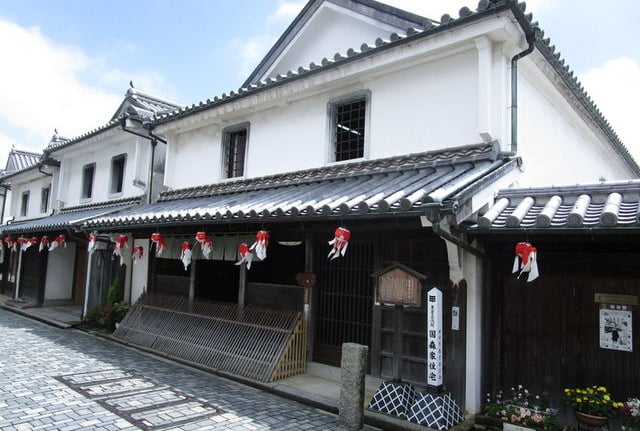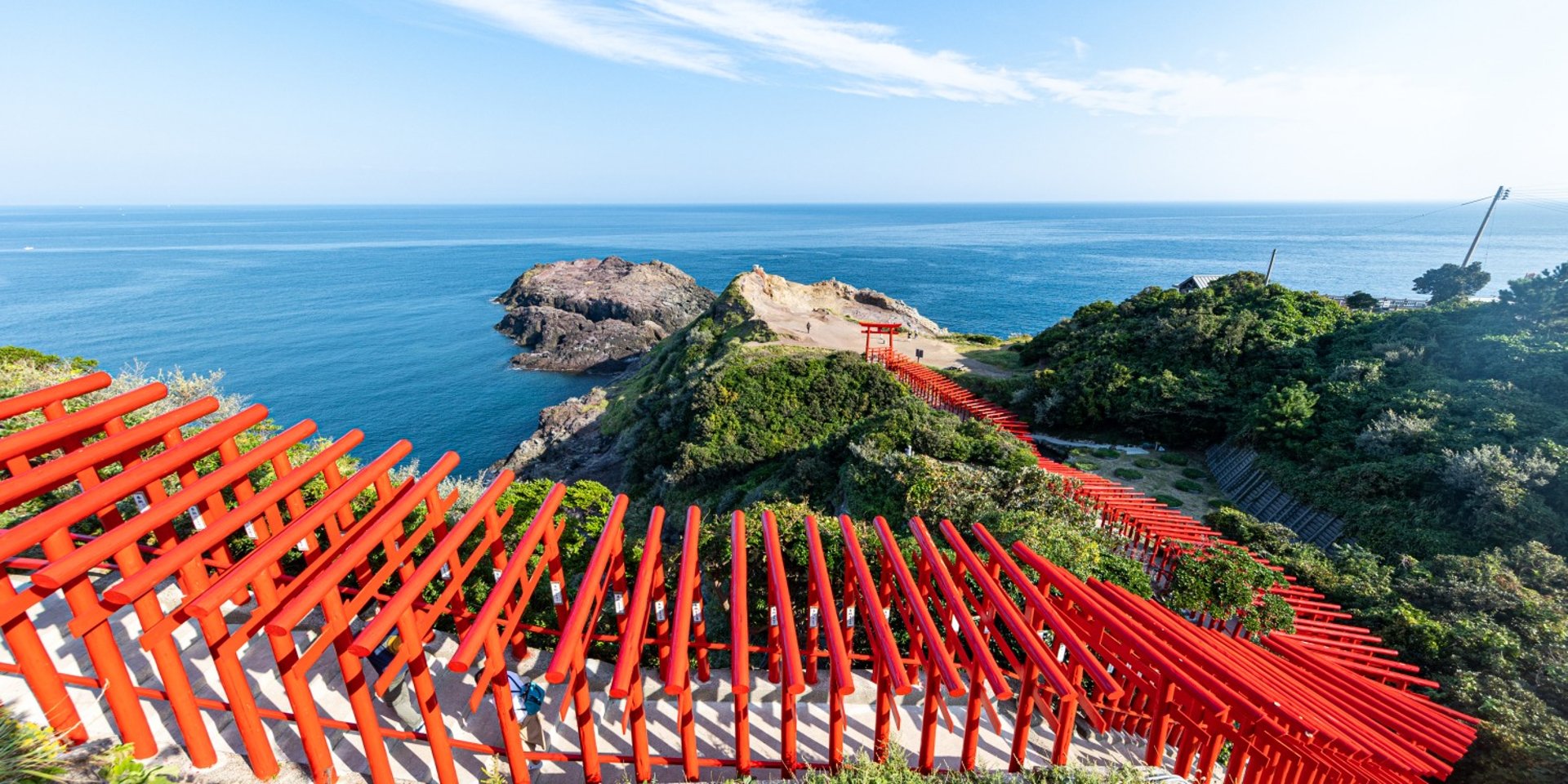
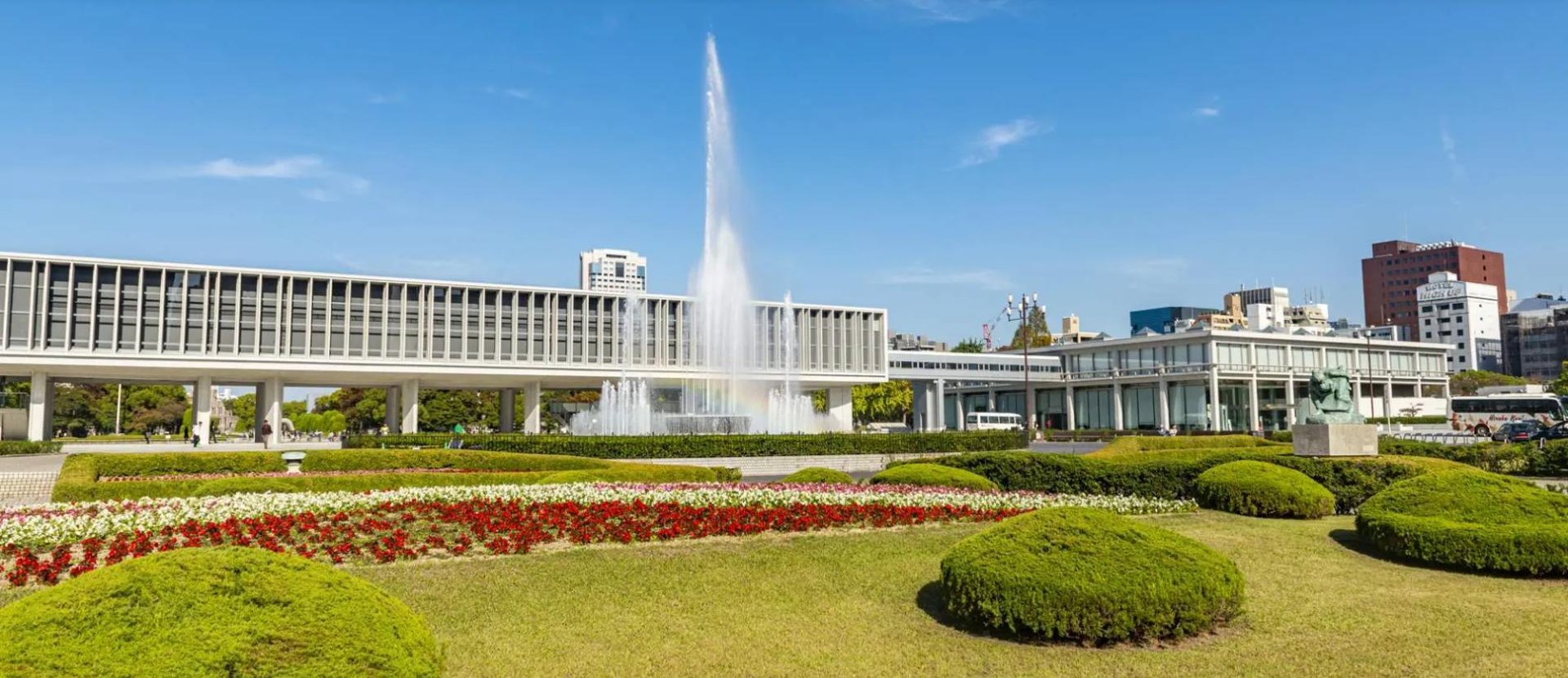
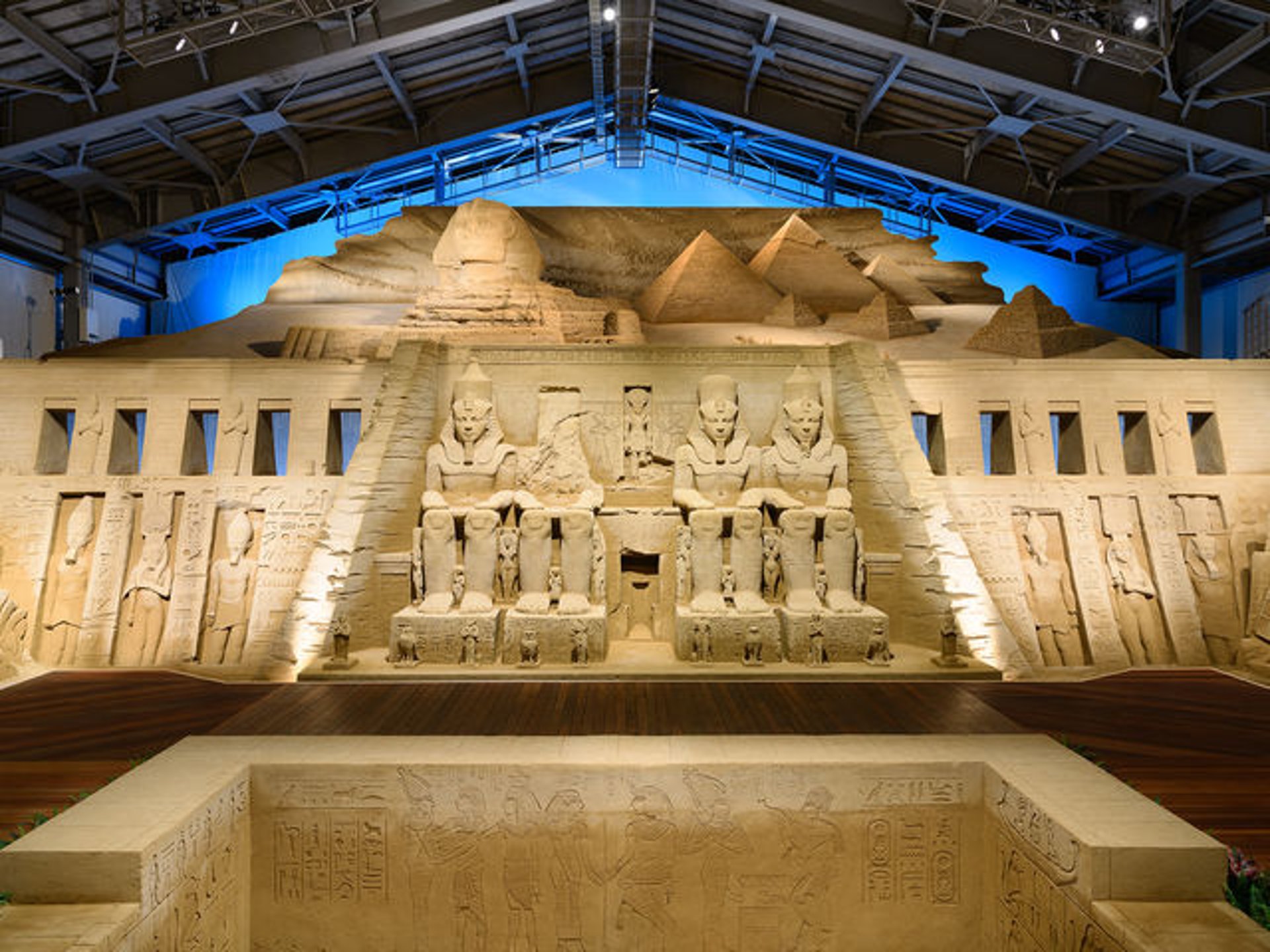
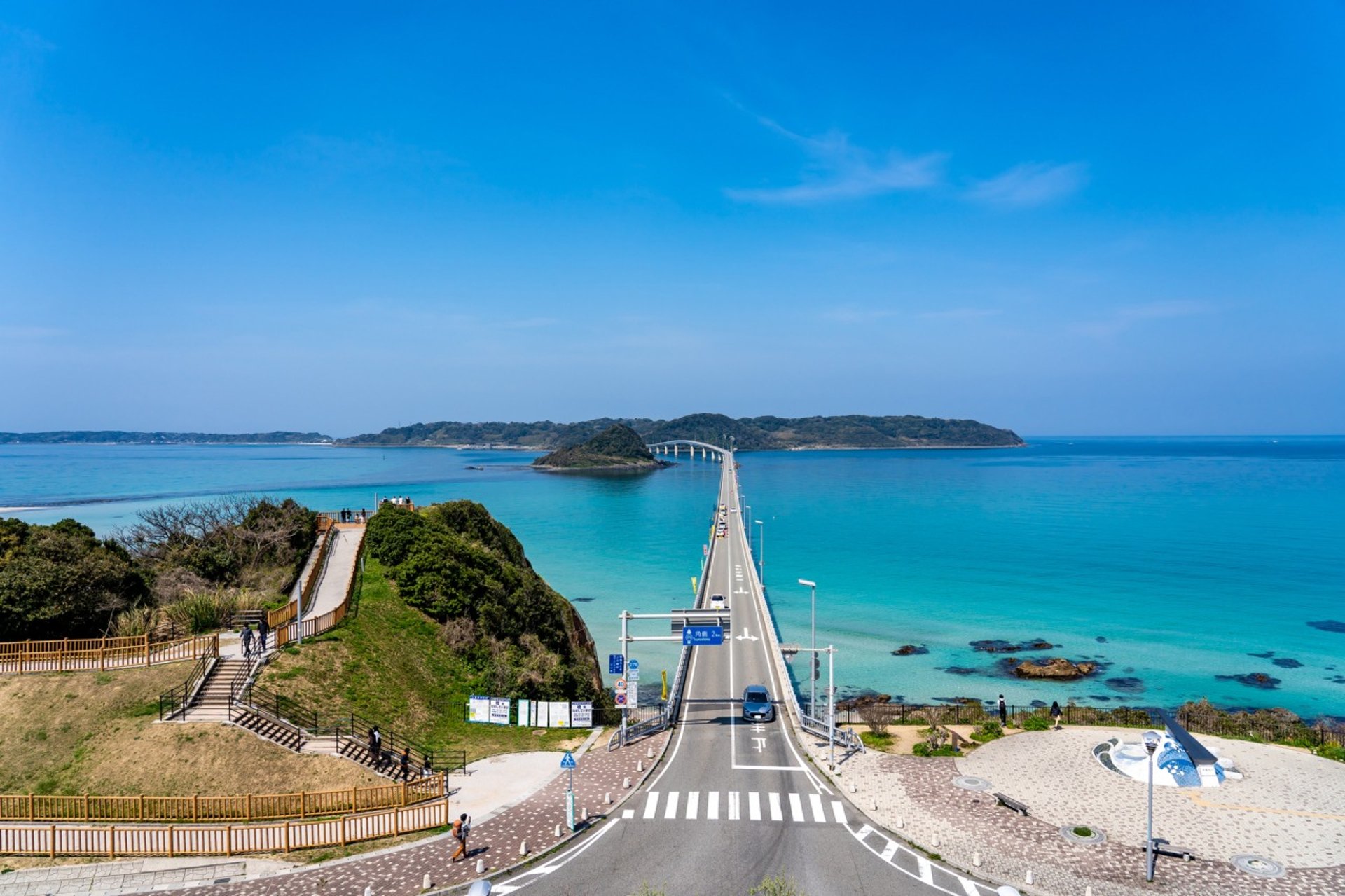
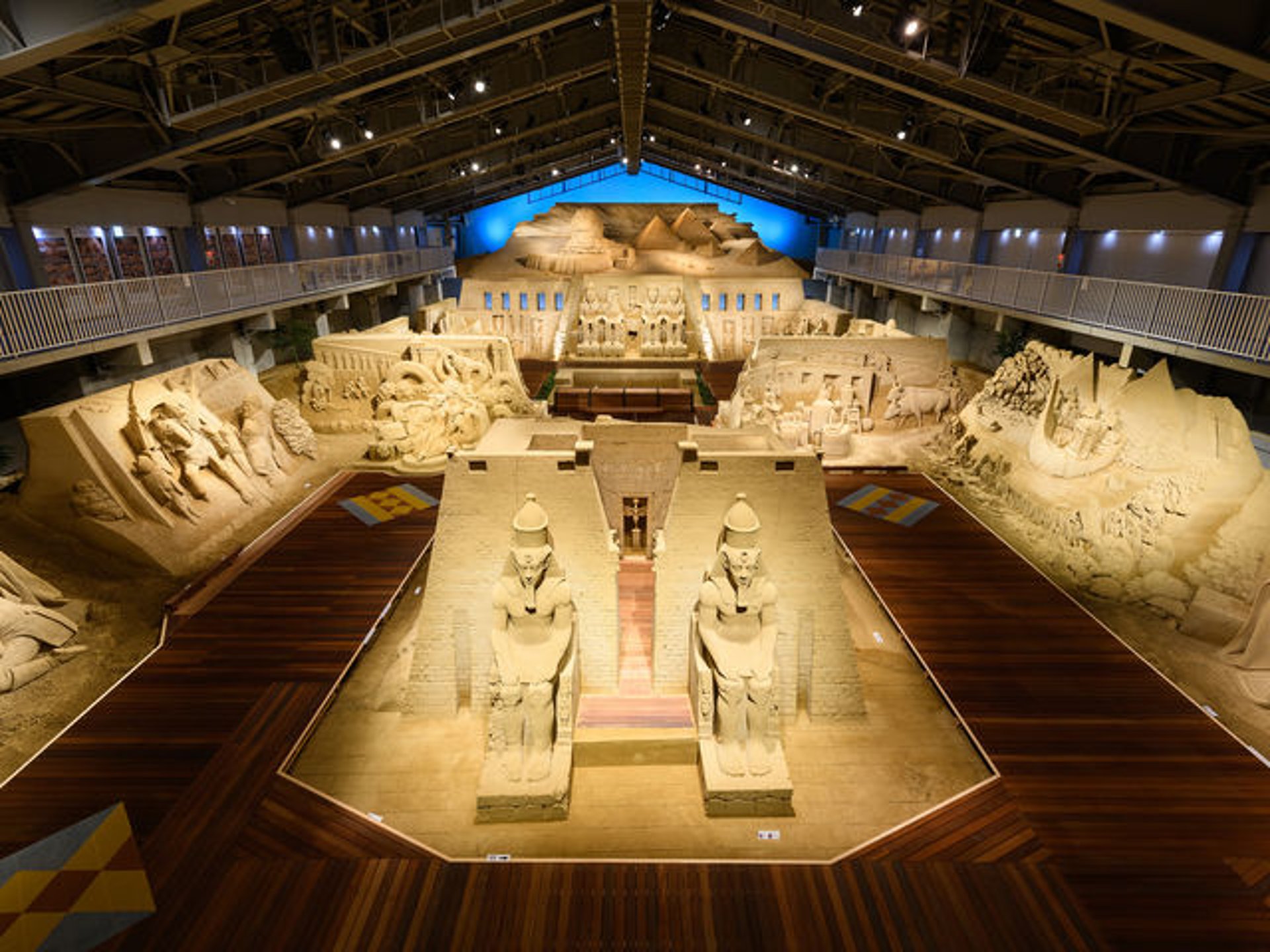
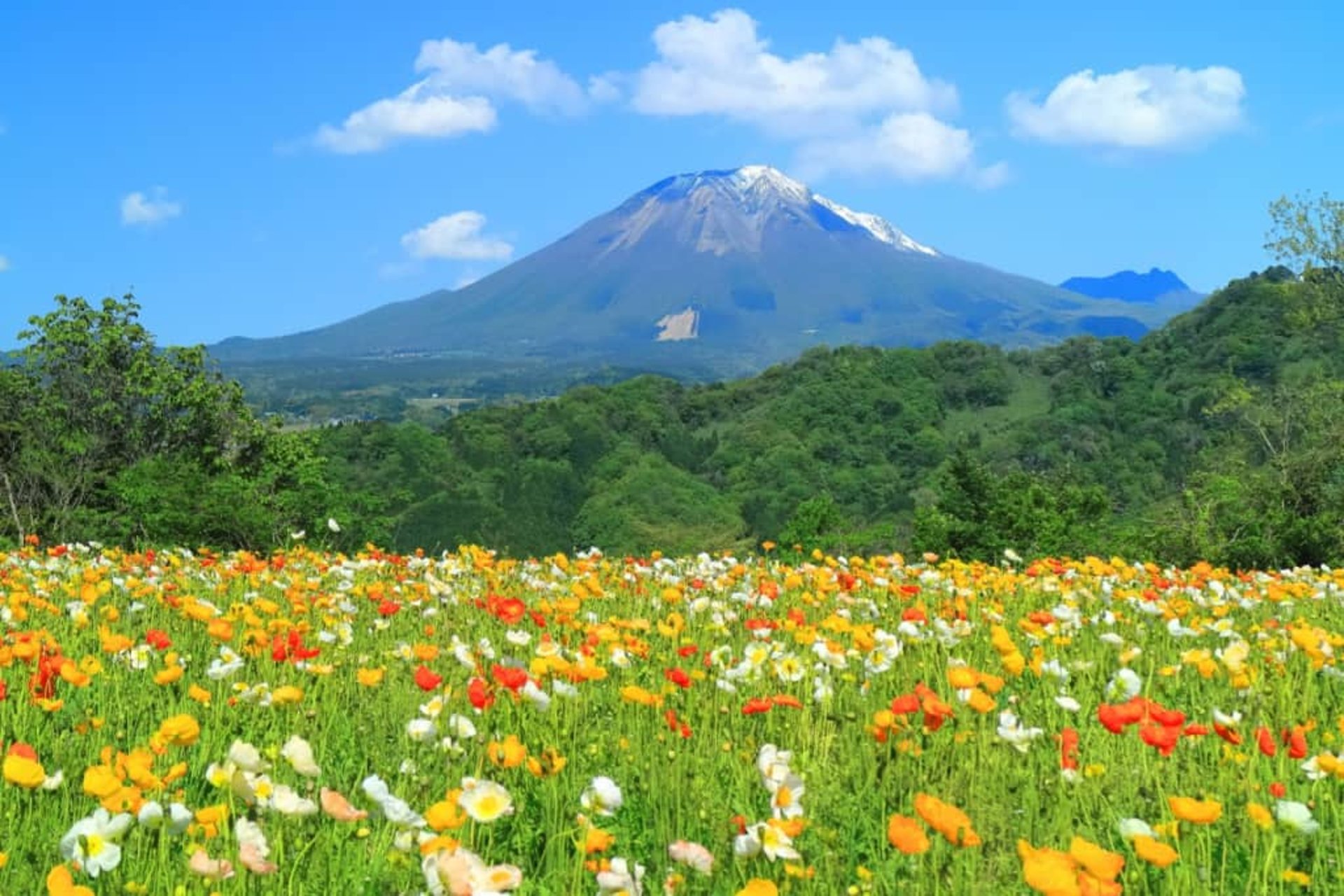
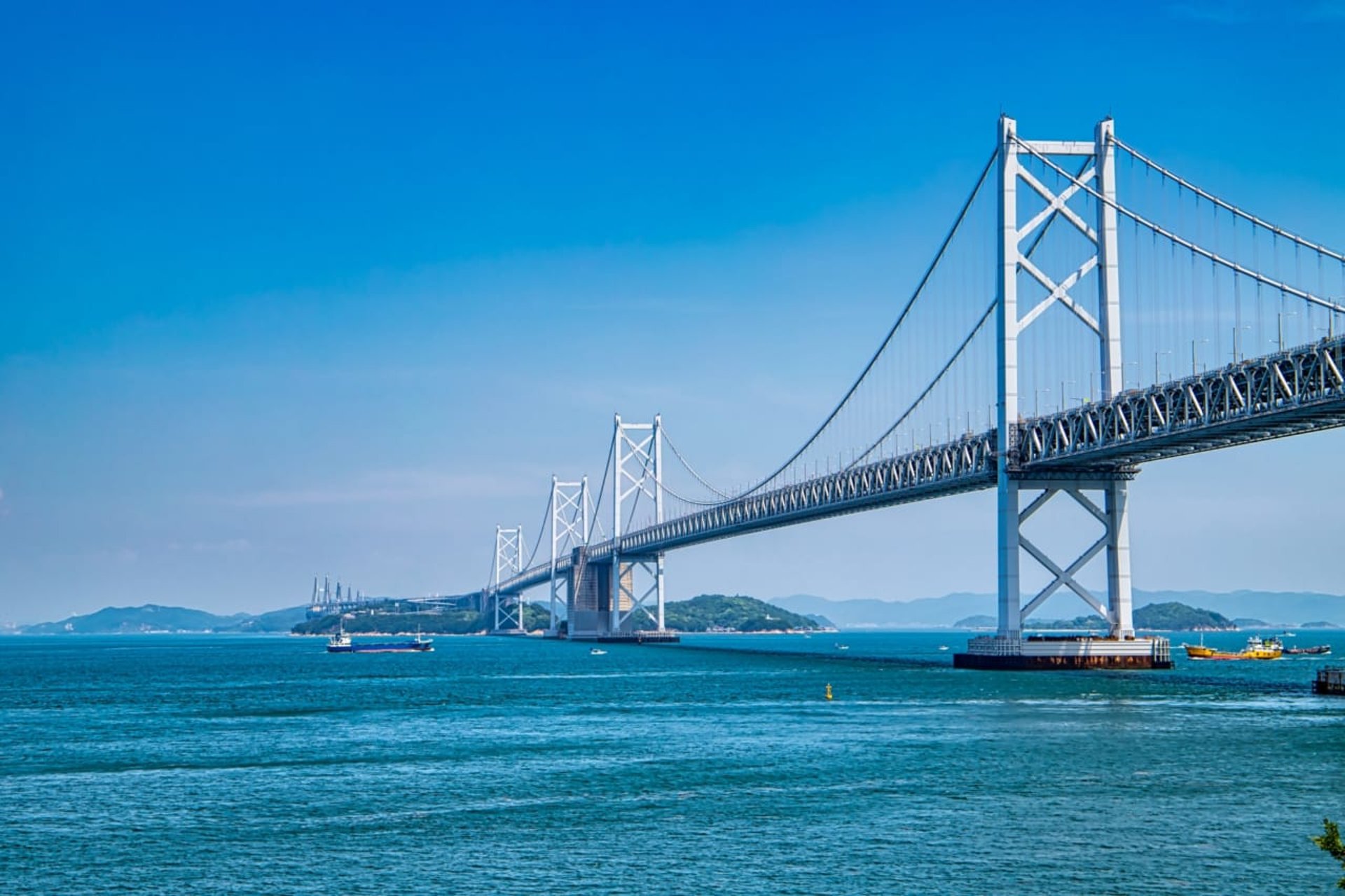
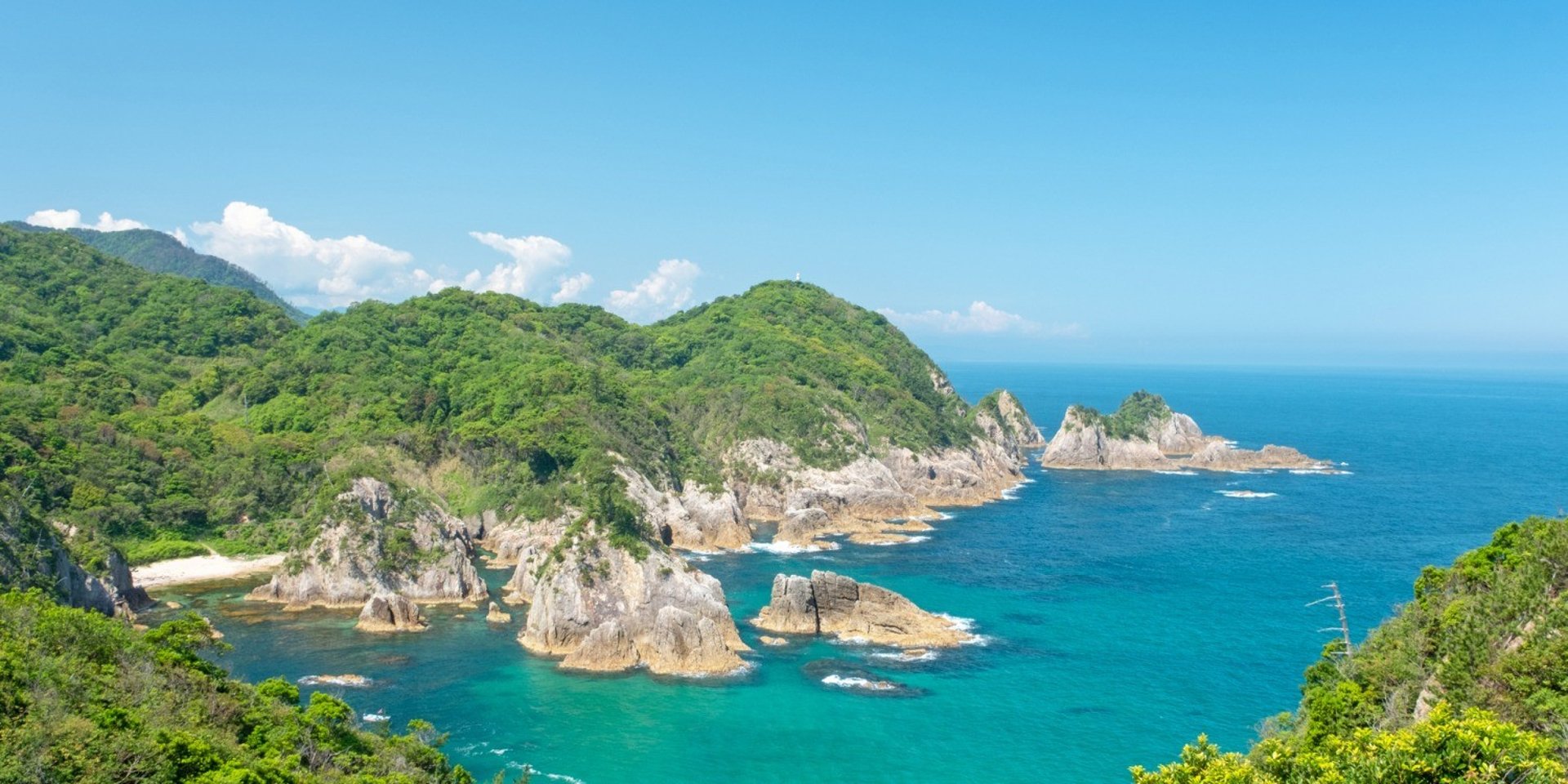
Sanin ・Sanyo
The San'in and San'yo regions are made up of five prefectures: Tottori, Shimane, Okayama, Hiroshima, and Yamaguchi, and are full of interesting stories, beautiful nature, and fun adventures. There are many famous places to visit, including Itsukushima Shrine, which is registered as a World Heritage Site. Other attractions include Izumo Taisha, a powerful and special place, and Tottori Sand Dunes, the largest sand dune in Japan. We will introduce the attractions of these tourist spots.
Sanin and Sanyo 's Seasonal Attractions
The San'in and San'yo regions are located in the western part of the Japanese archipelago, and cover a wide area including the northern (San'in) and southern (Sanyo) parts of the Chugoku region. This area is made up of the San'in region on the Sea of Japan side, which is rich in nature and culture, and the San'yo region, which is dotted with serene scenery and historic cities along the Seto Inland Sea. This region shows different faces throughout the four seasons, and each season has its own unique charm.
Spring (March to May)
In spring in the San'in and San'yo regions, flowers bloom all over the place, creating gorgeous scenery.
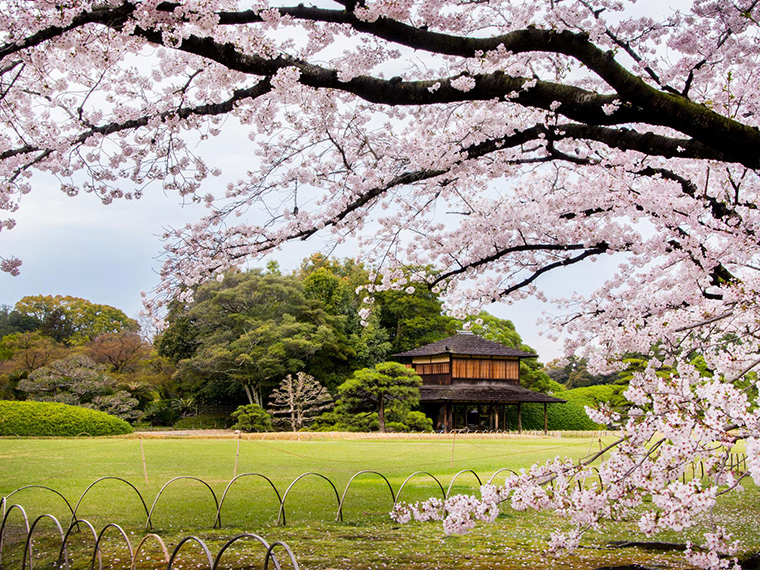

Attractions and Activities
・Tours of famous cherry blossom spots
Hiroshima Prefecture: Hiroshima Castle
Around Hiroshima Castle, Somei-yoshino cherry trees are in full bloom, creating a beautiful contrast with the moat.
Tottori Prefecture: Mt. Daisen
At the foot of Mt. Daisen, you can enjoy a rare view of cherry blossoms and snow in harmony.
Okayama Prefecture: Korakuen
Korakuen, one of the three most famous gardens in Japan, is popular for its elegant scenery of cherry blossoms and gardens.
・Hiking in the fresh greenery
Shimane Prefecture: Around Izumo Taisha Shrine
The approach to Izumo Taisha Shrine and the surrounding forest are colored with fresh greenery, making it a fun time to stroll.
Yamaguchi Prefecture: Akiyoshidai
In Akiyoshidai, where limestone karst topography spreads, the grasslands are covered in green in spring.
Okayama Prefecture: Korakuen
Korakuen, one of Japan's three most famous gardens, is popular for its elegant scenery created by cherry blossoms and gardens.
Summer (June to August)
The Seto Inland Sea coast of the Sanyo region is known for its beautiful blue summer skies and seas, and is a popular destination for marine activities and tourism.
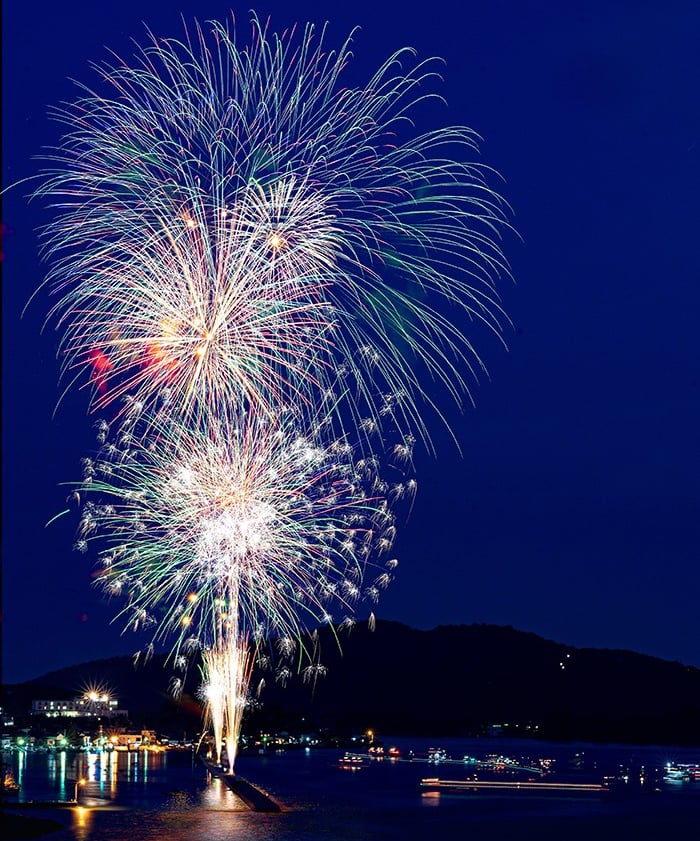

Attractions and Activities
・Spectacular views of the Seto Inland Sea
The Seto Inland Sea coast in the Sanyo region is a popular destination for marine activities and tourism, with beautiful blue skies and seas in summer.
Kagawa Prefecture: Shodoshima
Famous for its olive orchards and Angel Road, it is known as a symbol of summer.
Hiroshima Prefecture: Miyajima (Itsukushima Shrine)
A place where the large torii gate floating on the sea, the blue sea, and the sea breeze give you a cool feeling.
・Summer festivals and fireworks displays
A fantastic festival where Tanabata decorations and lanterns decorate the town.
Yamaguchi Prefecture: Nagato Tanabata Festival
A fantastic festival where Tanabata decorations and lanterns decorate the town.
Okayama Prefecture: Kurashiki River Boat Fireworks Display
The fireworks, set off against the backdrop of Kurashiki City's traditional townscape, are especially romantic.
・Swimming beaches
There are many beautiful swimming beaches in the Seto Inland Sea and the Sea of Japan.
Tottori Prefecture: Kaize Onsen
A spot where you can enjoy hot springs and swimming in the sea at the same time.
Hiroshima Prefecture: Mukaishima
It features a quiet beach and is popular with families.
Autumn (September to November)
The San'in and San'yo regions have many places where you can see beautiful autumn leaves.
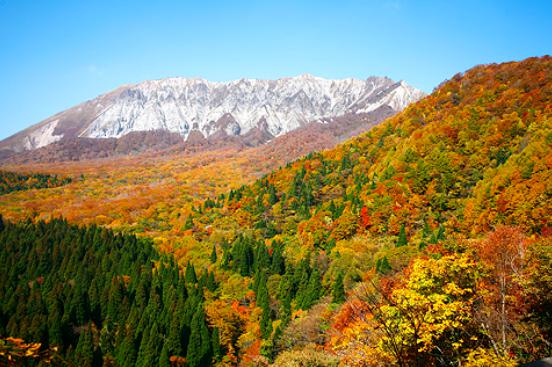

Attractions and Activities
・Famous spots for viewing autumn leaves
Tottori Prefecture: Mt. Daisen
In autumn, the golden leaves and remaining snow on the mountaintop are spectacular.
Hiroshima Prefecture: Miyajima (Mt. Misen)
The autumn leaves seen from the cable car of Mt. Misen are spectacular.
Okayama Prefecture: Hiruzen Plateau
You can enjoy viewing autumn leaves in the vast nature of the Hiruzen Plateau.
・Crop harvesting experience
Autumn is the season for crops to ripen. You can experience and taste local specialties.
Shimane Prefecture: Pear picking in Matsue
Fruit picking is popular in Matsue City, and you can pick pears and grapes.
Hiroshima Prefecture: Citrus fruits in Onomichi
You can enjoy mandarin orange picking around Onomichi.
・Events
Tottori Sand Dunes Concert (Tottori City)
The outdoor concert held at the Tottori Sand Dunes on an autumn evening is a magical experience.
Winter (December to February)
Winter in the Sanin and Sanyo regions is the season of hot springs and snowy scenery.
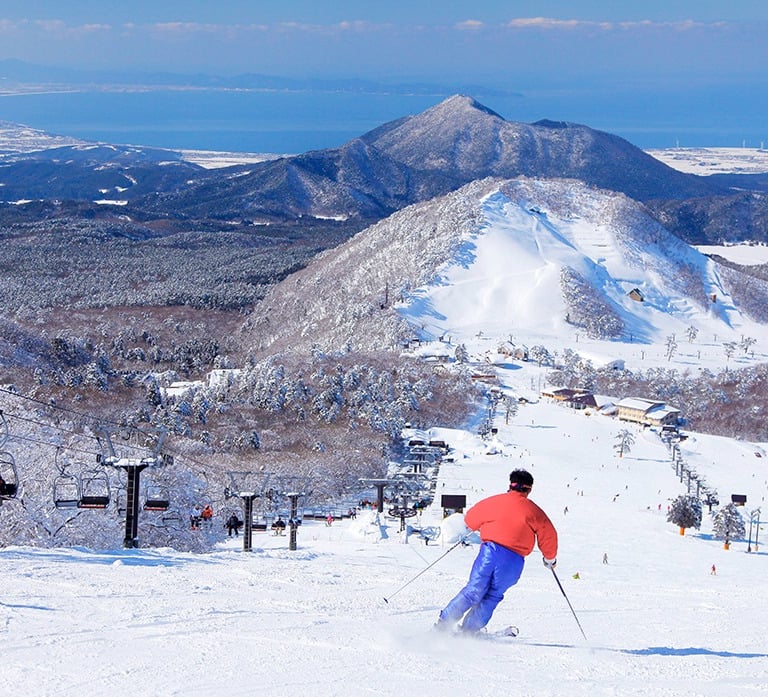

Attractions and Activities
・Hot spring tours
There are many hot springs in the Sanin and Sanyo regions that have been loved for a long time.
Shimane Prefecture: Tamatsukuri Onsen
A historic hot spring town, perfect for relieving the cold winter.
Tottori Prefecture: Misasa Onsen
A hot spring with the highest radium content in Japan, it is also effective for improving health.
Hiroshima Prefecture: Yukichi Onsen
A secret hot spring where you can relax away from the hustle and bustle of the city.
・Snowy landscapes and spectacular winter scenery
In winter, snowy landscapes spread across the mountainous areas of the Sanin region.
Tottori Prefecture: Mt. Daisen
Mt. Daisen is also popular as a ski resort in winter, and the snow-covered mountains look beautiful.
Shimane Prefecture: Shinji Lake
The "sunset over Lake Shinji" seen at dusk in winter is exceptional.
・Winter events
Yamaguchi Prefecture: Hagi Winter Siege
An event that recreates a samurai procession from the Edo period, a must-see for history buffs.
Tottori Prefecture: Mt. Daisen
Tottori Prefecture: Tottori Shan Shan Festival Winter Edition
Popular Attractions in Sanin and Sanyo
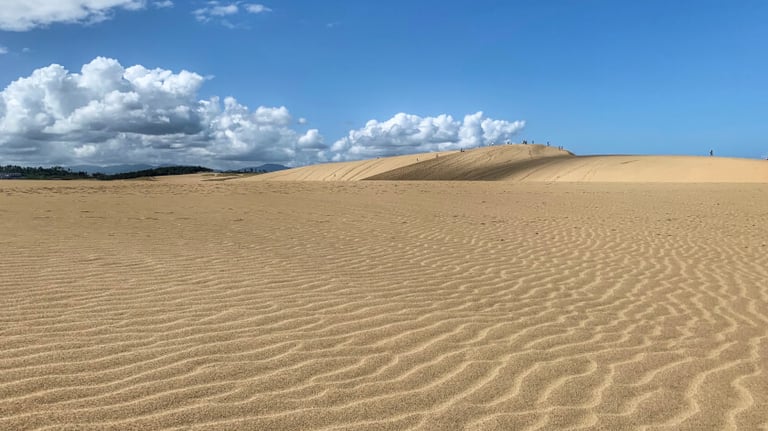

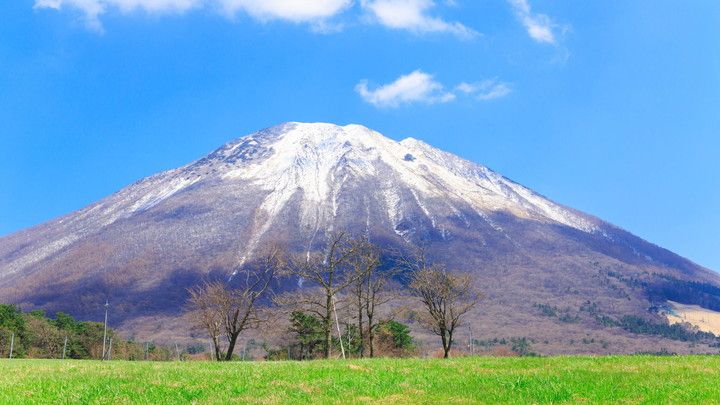

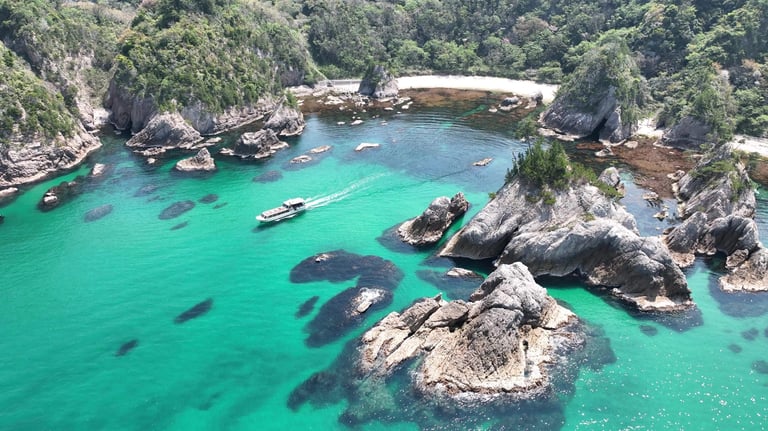

Tottori Prefecture
Tottori Prefecture is located in the western part of Honshu, Japan, and belongs to the eastern part of the San'in region (San-in region). Facing the Sea of Japan, the prefecture is characterized by its rich nature and historical culture. The magnificent natural scenery, such as “Tottori Sand Dunes” and “Daisen (Mt. Daisen),” is particularly attractive. The area is also home to many unique tourist attractions such as “Kitaro” and the "Sand Museum. Below is some useful information for tourists visiting Tottori Prefectur
The Tottori Sand Dunes, located in Tottori City, Tottori Prefecture, are one of the largest sand dunes in Japan and a natural landmark, also known as “Japan's desert” for its spectacular scenery. The dunes, which stretch for about 16 kilometers, are dynamic landforms shaped by the forces of wind and sea, and are designated as a national natural monument. In 2007, it was also registered as a UNESCO World Geopark as part of the San'in Kaigan Geopark.
Tottori Sand Dunes
Daisen
Daisen is a 1,729-meter-high mountain located on the border between Tottori and Shimane prefectures, and is known as the highest peak in the Chugoku region. Known since ancient times as “Izumo Fuji” or “Hoki Fuji,” its beautiful conical shape is a symbol of the region. Daisen, which shows different faces in each of the four seasons, is an attractive place for climbers and tourists alike, and is dotted with hot springs and natural parks in the surrounding area.
Uradome Coast Pleasure Boat
Uradomi Coast is a rias coast located in Iwami Town, Iwami-gun, Tottori Prefecture, and is designated as a national scenic beauty spot and a natural monument. The Uradome Coastal Pleasure Boat is an extremely popular activity for visitors to enjoy the beautiful scenery up close. The scenery of oddly shaped rocks, caves, and the crystal clear sea is like a work of art created by nature and attracts many tourists. The “Odd Rocks,” “Caves,” and “Clear Sea” are just a few of the many attractions that make this spot a must-see for visitors.
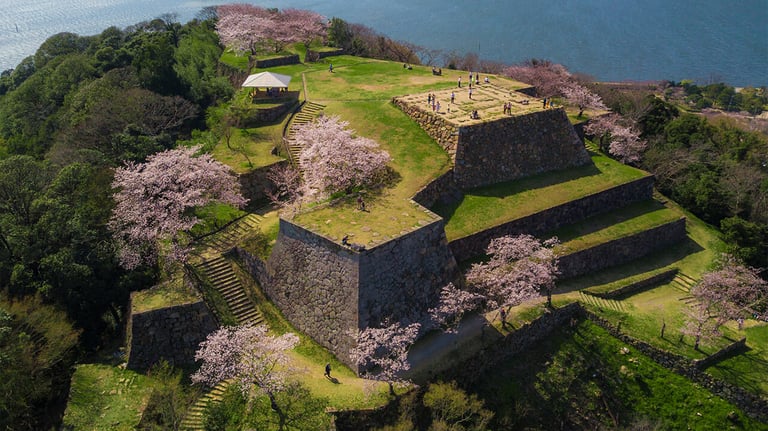

Tottori Castle Ruins
Tottori Castle Ruins, also known as Hisamatsuyama Castle, is a historical castle ruin located on Hisamatsuyama in Tottori City, Tottori Prefecture. The castle flourished from the Sengoku Period to the Edo Period. Today, stone walls, earthen mounds, and other remains remain, and it has been selected as one of the "100 Great Castles of Japan. There is also a beautiful nature park in the surrounding area, making it a popular tourist spot for many visitors.
Hakuto Shrine
Hakuto Shrine is an ancient shrine located in Tottori City, Tottori Prefecture, and is known as the site associated with the legend of the "White Rabbit of Inaba. This myth is mentioned in “Kojiki” (Records of Ancient Matters) and “Nihonshoki” (Chronicles of Japan), and is an important symbol of Japanese mythological culture. It is also a power spot visited by many worshippers as a god of “match-making” and "healing of skin diseases.
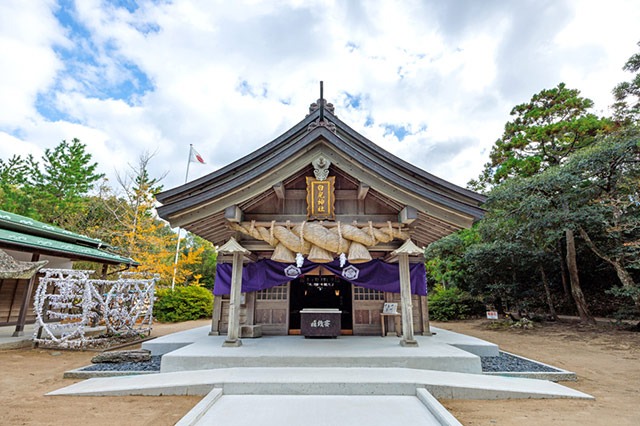

The Sand Museum is a unique art spot in Tottori City, Tottori Prefecture, and is the only museum in Japan with a sand sculpture theme. Every year, famous sand sculptors from Japan and abroad gather to create spectacular sand sculptures. The scale and quality of the sculptures have attracted attention from around the world, making it a popular tourist destination with many visitors. Located close to the “Tottori Sand Dunes,” this facility is particularly important as part of regional revitalization efforts based on the theme of "sand.
Sand Museum
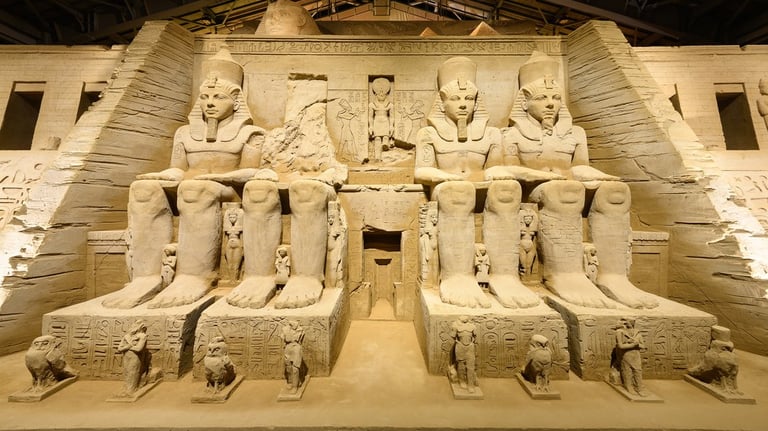

Koyama Pond
Koyama Lake is one of the largest brackish lakes in Japan, located in Tottori City, Tottori Prefecture, with a circumference of approximately 20 kilometers. It is close to the Sea of Japan and is known as a lagoon, with a unique environment where seawater and freshwater mix together. Due to its beautiful scenery and rich natural environment, it is a popular spot not only with locals but also with many tourists.
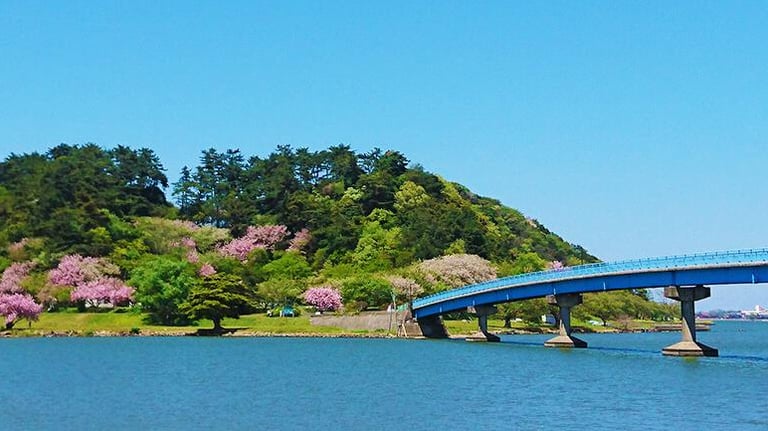

Kurayoshi Storehouses
Kurayoshi White-Walled Storehouses is a historic streetscape in Kurayoshi, Tottori Prefecture, lined with merchant houses and storehouses from the Edo period through to the Meiji and Taisho periods. Characterized by white plastered walls and black tiled roofs, it is also known as "White-Walled Romantic Street." This beautiful landscape has been designated as an Important Preservation District for Groups of Traditional Buildings by the national government, and is a popular spot visited by many tourists.
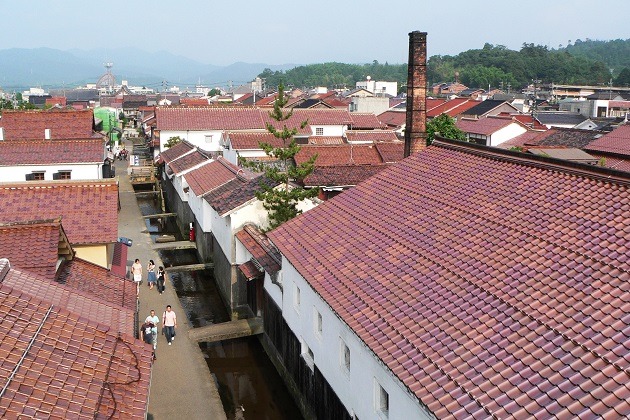

Tottori Flower Corridor
Tottori Flower Park is one of Japan's largest flower parks, located in Nanbu-cho, Saihaku-gun, Tottori Prefecture. It is a tourist spot where you can enjoy beautiful flowers throughout the four seasons. The vast grounds are home to a variety of theme gardens, where different flowers bloom in every season. There are also observation decks and event facilities, making it popular with a wide range of people, from families and couples to solo travelers.
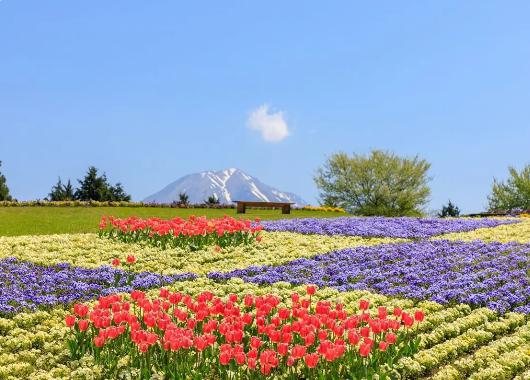

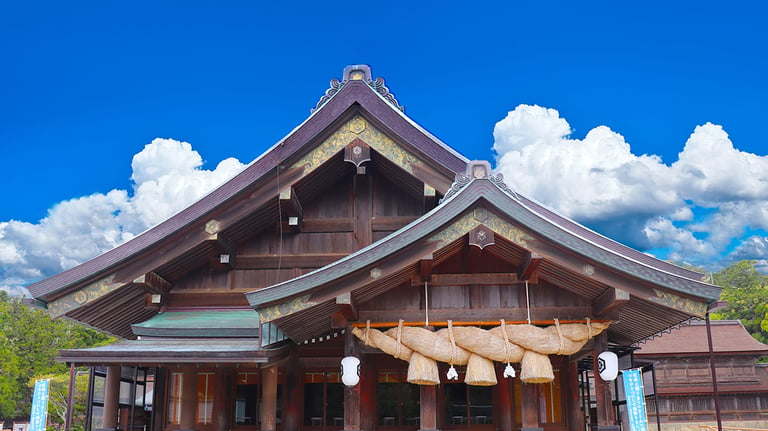

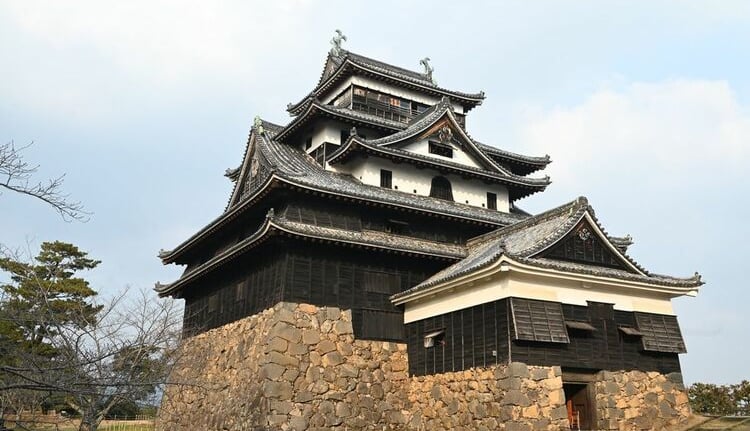


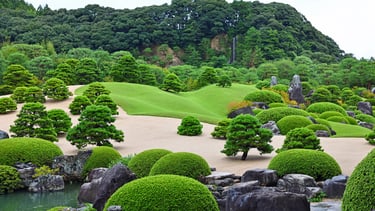
Shimane Prefecture
Shimane Prefecture is located in the western part of Honshu, Japan, and belongs to the western part of the Sanin region. Facing the Sea of Japan, it is an area where history and nature are in harmony, such as “Izumo mythology” and Lake Shinji. It is also characterized by the Izumo Taisha Shrine, known as the “holy place of marriage,” and a well-developed hot spring culture. Below is some useful information for tourists visiting Shimane Prefecture.
Izumo-taisha Shrine, located in Izumo City, Shimane Prefecture, is one of Japan's representative ancient shrines and is dedicated to Okuninushi no Mikoto, known as the god of “building the nation of Japan” and "matchmaking. It is mentioned in Japan's oldest history books, Kojiki and Nihonshoki, and is a power spot visited by many worshippers from all over the country. It is also a tourist destination that attracts attention from both Japan and abroad for its value as a “Ichimiya Tour” and "Home of Myths.
Izumo Taisha Shrine
Matsue Castle
Matsue Castle is one of Japan's most historic castles, located in Matsue City, Shimane Prefecture, and is the symbol of Matsue City, known as the "Little Kyoto of Sanin." Built in 1611, the castle is one of 12 castles with surviving castle towers and is designated as a national treasure. It is a popular spot that attracts many tourists due to its beautiful appearance and historical value. It is also surrounded by moats and gardens, making it a distinctively scenic spot.
Adachi Museum of Art
The Adachi Museum of Art is one of Japan's leading art museums, located in Yasugi City, Shimane Prefecture, and is also known worldwide as a "garden museum" that exhibits mainly modern Japanese paintings. Its vast and beautiful Japanese garden in particular is known as "Japan's best garden," and has been ranked number one in the world in the garden category for over 20 years in a row (according to a British magazine called Garden). It also houses a large collection of works by Japanese painters, including Yokoyama Taikan, and attracts many visitors as a special space where art and nature come together.
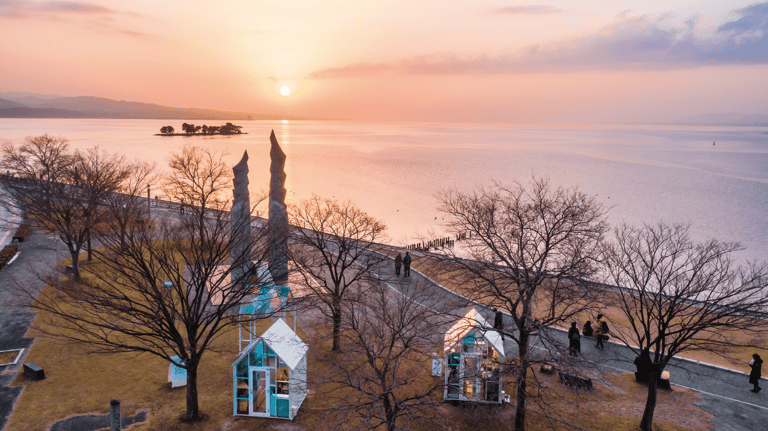

Shinji Lake
Shinji Lake is a brackish lake that straddles Matsue City and Izumo City in Shimane Prefecture, and is the seventh largest lake in Japan. It is close to the Sea of Japan and is known as a lagoon, with a unique environment where seawater and freshwater mix together. Due to its beautiful scenery and rich natural environment, it has been selected as one of the "100 Best Sunsets in Japan," and the spectacular view at dusk in particular attracts many people. It is also famous for its specialty products known as the "Seven Treasures of Shinji Lake " which are deeply connected to the local food culture.
Tsuwano
Tsuwano is a historical town located in Tsuwano Town, Kanzoku County, Shimane Prefecture, and is a beautiful tourist destination known as "Little Kyoto in the San-in Region. Known as a castle town that flourished from the Edo period to the Meiji period, its tasteful scenery and cultural heritage attract many people. It is also designated as an “Important Preservation District for Groups of Traditional Buildings in Japan,” and is a popular spot visited by tourists from Japan and abroad.
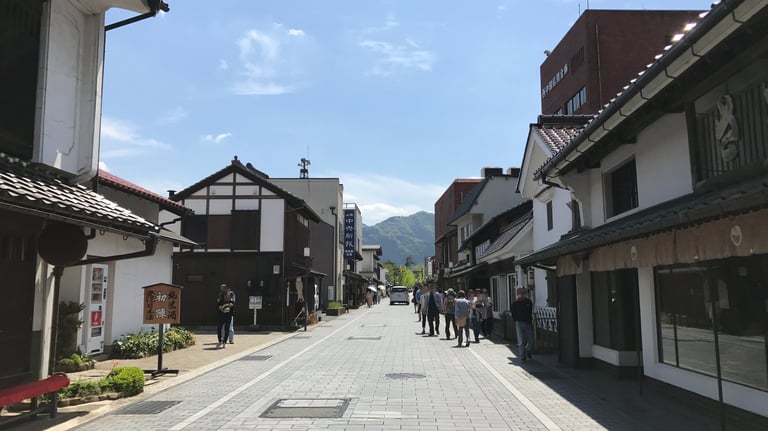

The Ryugenji Mabu is part of the Iwami Ginzan Isseki (Iwami Silver Mine) in Ota City, Shimane Prefecture, and is the site of an actual mine shaft where silver was mined in the Edo period. Mabu" is a word used in the mining industry to refer to a tunnel or mine shaft. The site is a valuable place to learn about the history of Japanese mining technology and is one of the main components of the “Iwami Ginzan Silver Mine Site and its Cultural Landscape,” which was registered as a UNESCO World Heritage Site in 2007.
Ryugenji Mabu
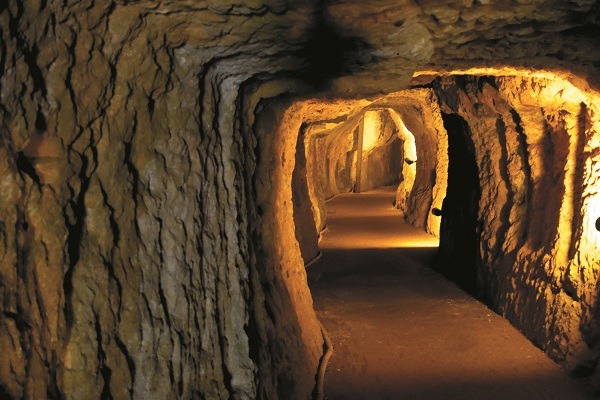

Nishinoshima
Nishinoshima is a remote island located in Nishinoshima-cho, Oki County, Shimane Prefecture, and is part of the Oki Islands in the Sea of Japan. The island, with its rich natural environment and unique culture, is known as the center of the “Oki UNESCO World Geopark” and is a popular spot for many tourists. The island is also famous for its historical ruins and beautiful scenery, especially the spectacular “Kuniga Coast” and “Matengai” cliffs.
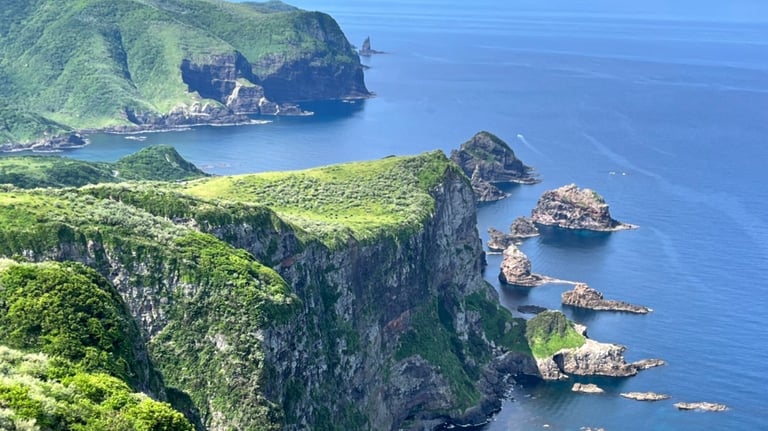

Taikodani Inari Shrine
Taiko-dani Inari Shrine is a beautiful Inari shrine located in Tsuwano Town, Shimane Prefecture, featuring an approach lined with approximately 1,000 vermilion-lacquered torii gates. It is called the “Fushimi Inari of the West” for its majestic scenery, and is a popular spot visited by many people. The shrine is also said to bring a wide range of blessings, such as prosperous business, match-making, and academic success, and attracts worshippers from all over the country as well as local people.
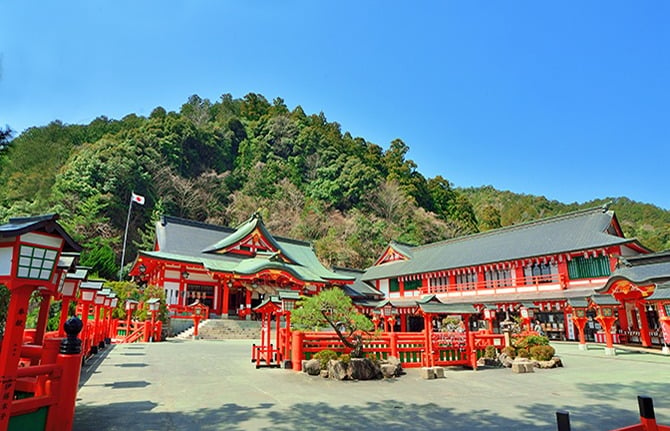

Mount Sanbe
Mt. Sanbe is a beautiful volcano located in Oda City, Shimane Prefecture, with an elevation of 1,126 meters. Its three distinctive peaks (Otoko-Sanbe, Onna-Sanbe, and Ko-Sanbe) are also known as "Izumo Fuji" and are loved as a symbol of the region. It is also certified as part of the Oki-Dogo UNESCO Global Geopark, and the area's rich natural scenery and diverse ecosystems attract many people.
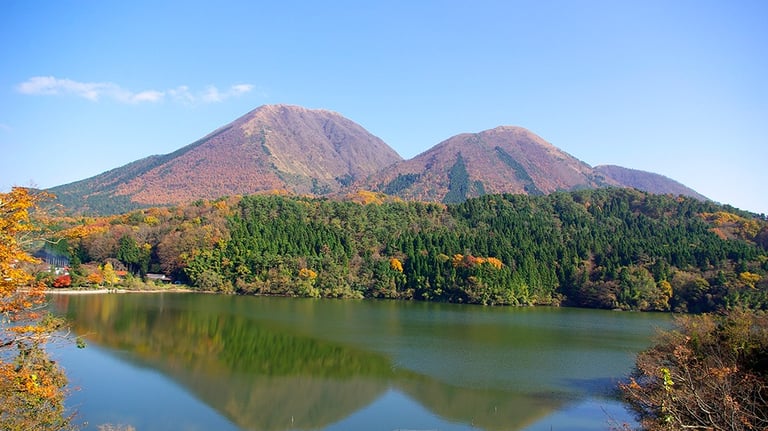

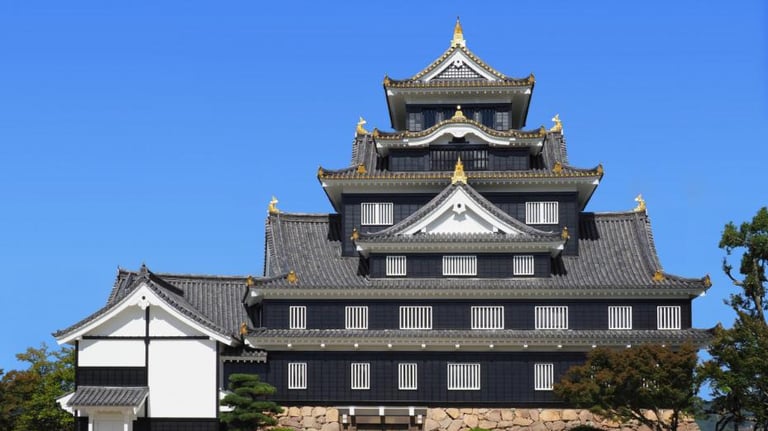

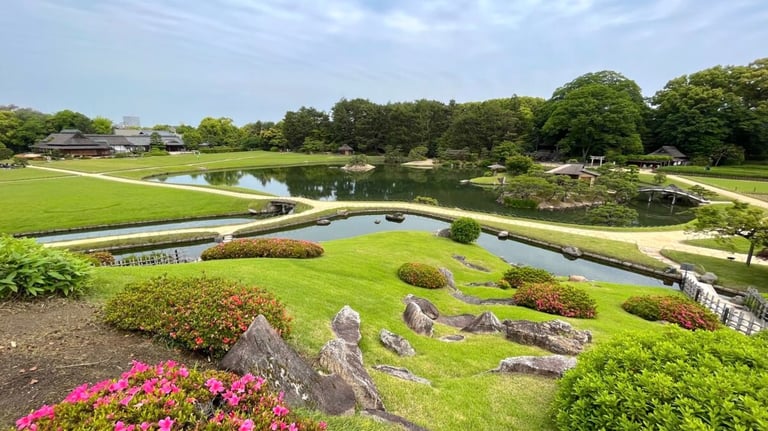

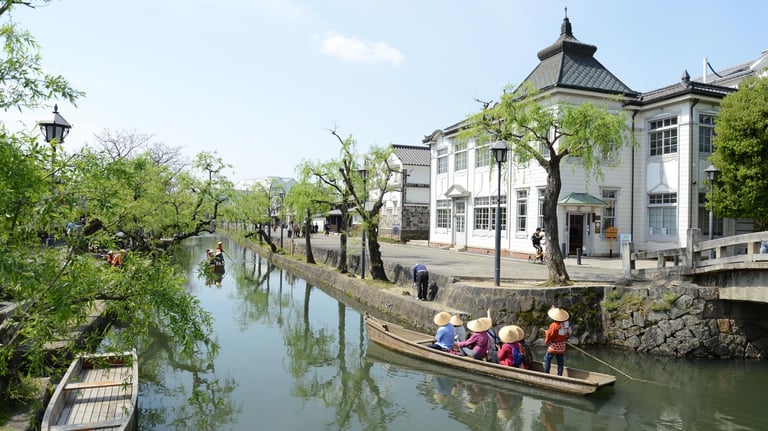

Okayama Prefecture
Okayama Prefecture is located in western Honshu, Japan, and constitutes part of the Setouchi region (Setouchi area). It is characterized by a mild climate and abundant nature, and is also known as the "Land of Sunshine. It is also known for its historical castles, beautiful gardens, and as the birthplace of the "Momotaro Legend. In addition, the many islands in the Seto Inland Sea and delicious agricultural products are also attractive. Below is some useful information for tourists visiting Okayama Prefecture.
Okayama Castle is a historic castle located in Okayama City, Okayama Prefecture, and is also known as the "Crow Castle." Built in 1597 by Ukita Hideie, the castle features black exterior walls and gold decorations, making it an important structure that conveys the legacy of the Sengoku period. The castle tower was destroyed by fire during the war, but was rebuilt in 1966 using reinforced concrete, and today the restored castle tower is a popular tourist spot.
Okayama Castle
Korakuen
Korakuen Garden, one of the three most famous gardens in Japan, is a feudal lord's garden built in the Edo period by the feudal lord of Okayama, Tsunamasa Ikeda. The vast 130,000-square-meter site is a “circular garden” with ponds, artificial hills, and tea houses, where visitors can enjoy beautiful seasonal scenery. In 2015, the garden was registered as a UNESCO World Heritage Site as a “Cultural Landscape of Japan,” and is a popular spot visited by many tourists from Japan and abroad.
Kurashiki Bikan Quarter
Kurashiki Bikan Historical Area in Kurashiki City, Okayama Prefecture, is an area lined with merchant houses and warehouses dating from the Edo period through the Meiji and Taisho periods. Characterized by buildings with white walls and black roof tiles, the beautiful landscape lined with willow trees has been called the "Venice of Japan. The area is also designated as a national Important Preservation District for Groups of Traditional Buildings, and is a popular spot visited by many tourists from Japan and abroad.
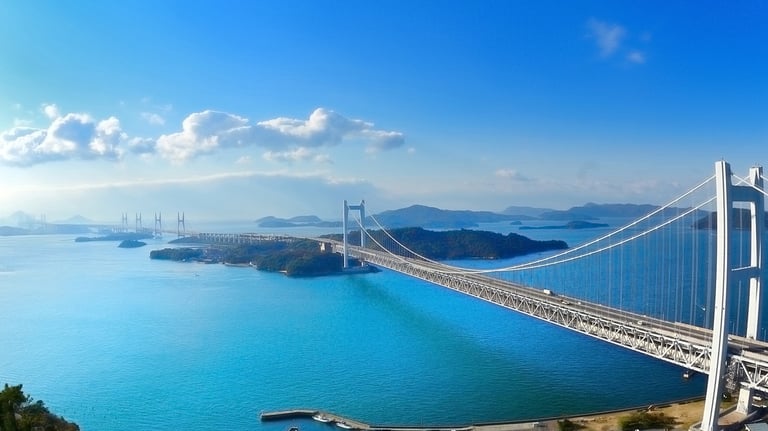

The Great Seto Bridge
The Great Seto Bridge is the world's longest combined railway and road bridge, connecting Honshu (Kurashiki City, Okayama Prefecture) and Shikoku (Sakai City, Kagawa Prefecture), and was opened in 1988. With a total length of approximately 13.1 kilometers, this bridge was completed using advanced technology and is a symbol of Japanese civil engineering. It also blends in well with the beautiful scenery of the Setonaikai National Park, making it a popular tourist destination.
Fuji Park
Fuji Park, located in Kagamino-cho, Tomata-gun, Okayama Prefecture, is a garden with one of Japan's largest wisteria trellises, and is a tourist spot where beautiful wisteria flowers bloom every spring. Over 150 wisteria trees of about 20 varieties are planted on the vast grounds, and the colorful flower clusters captivate visitors. It is also known as a famous cherry blossom spot, having been selected as one of the "100 Best Cherry Blossom Spots in Japan," and is popular as a garden that can be enjoyed throughout the four seasons.
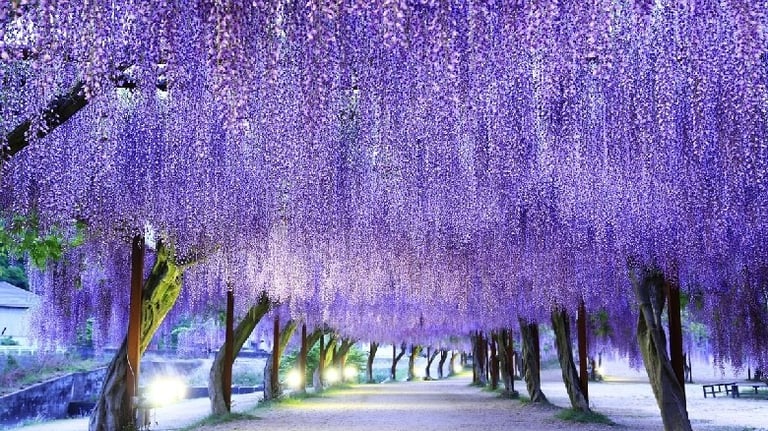

Kuroshima Venus Road is a beautiful coastal promenade in Tamano City, Okayama Prefecture, and is part of the Setonaikai National Park. This 3.5-kilometer-long promenade is a popular spot for enjoying the natural scenery of Kuroshima and its surroundings, and is ideal for walking and cycling. It has also been selected as one of the “100 Best Sunsets in Japan,” and attracts many tourists as a particularly beautiful place to watch the sunset.
Kuroshima Venus Road
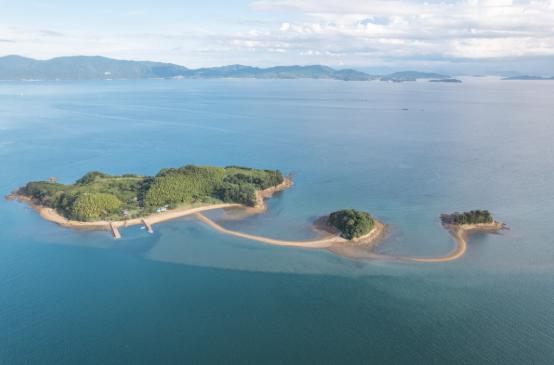

Kibitsu Shrine
Kibitsu Shrine is a historical shrine located in Okayama City, Okayama Prefecture, and is an important sacred site deeply connected with Japanese mythology and ancient history. Since ancient times, it has been revered as the chief guardian of “Kibi Province” and is the setting of the “Momotaro Legend”. The main shrine and worship hall, designated as national treasures, are distinctive features of the shrine, and their majestic architectural beauty and spacious grounds attract many visitors.
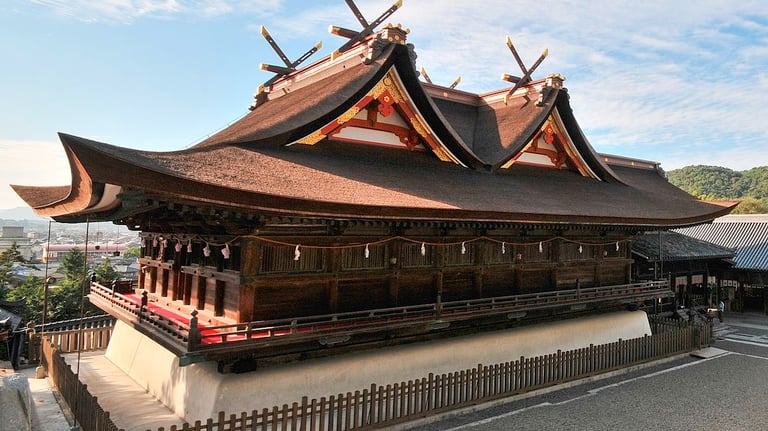

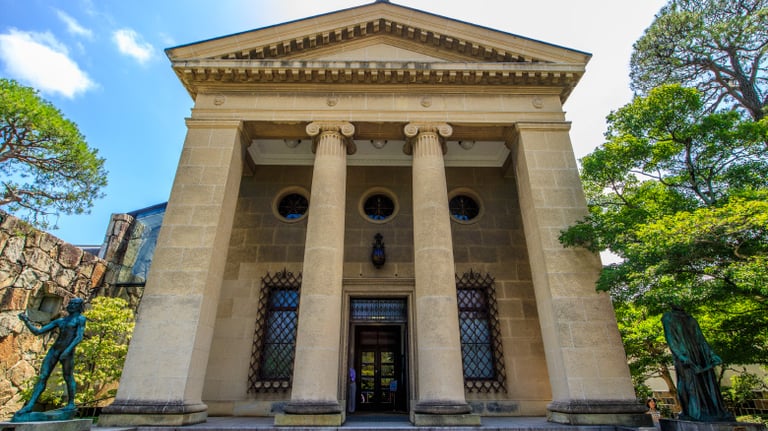

The Ohara Museum of Art opened in 1930. Founded by industrialist and art collector Magosaburo Ohara, the museum's collection is highly regarded both in Japan and abroad. Today, the museum exhibits a wide range of works, from modern paintings and sculptures to works by artists from the folk art movement and antiques from Egypt, East and West Asia. The museum's collection is home to approximately 3,000 works of art.
Ohara Art Museum
Old Shizutani School
The old shizutani School is Japan's oldest educational institution for the common people, located in Bizen City, Okayama Prefecture. It is a historic school founded in the Edo period. It was established in 1670 by the feudal lord of Okayama, Ikeda Mitsumasa, and was run under the philosophy of "spreading learning for the common people." It is currently registered as a nationally designated special historic site and important cultural property, and is also on the tentative list of UNESCO World Heritage sites.
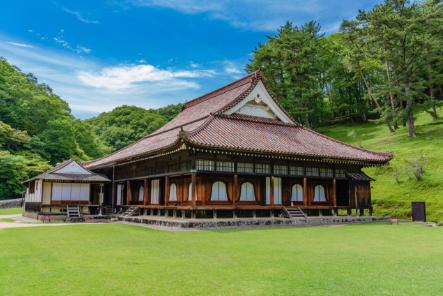

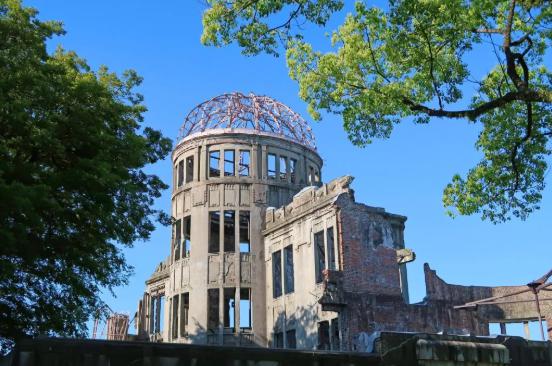

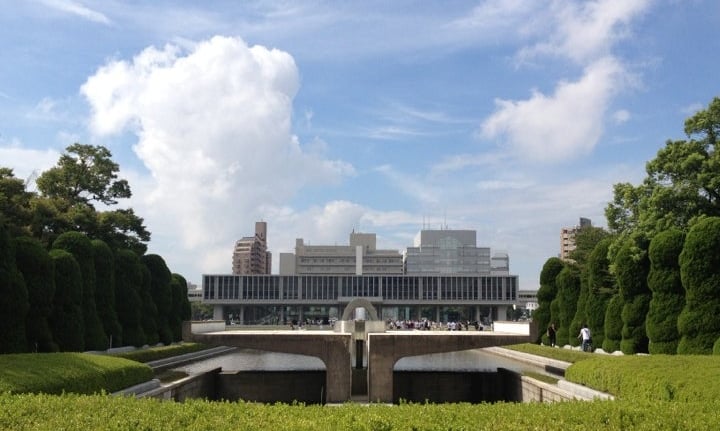

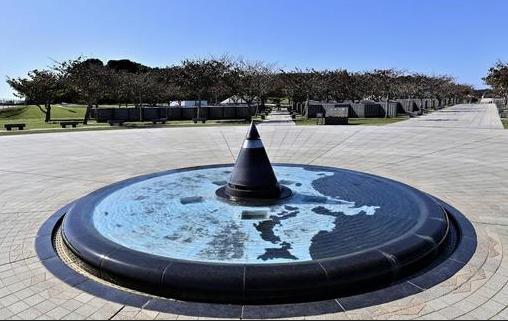

Hiroshima Prefecture
Hiroshima Prefecture is located in the western part of Honshu, Japan, facing the Seto Inland Sea. Characterized by a warm climate and abundant nature, Hiroshima City, known as the "City of Peace," is the center of development. Other attractions include historical sites such as Miyajima (Itsukushima Shrine) and Onomichi, as well as the area dotted with beautiful islands. Furthermore, the prefecture has a rich food culture, including oysters and Hiroshima-style okonomiyaki. Below, we will introduce some useful information for tourists visiting Hiroshima Prefecture.
The Atomic Bomb Dome is the remnants of a building located near the hypocenter of the atomic bomb dropped on the city of Hiroshima on August 6, 1945. Officially known as the Hiroshima Prefectural Industrial Promotion Hall, it is now attracting worldwide attention as a symbolic structure that conveys the horrors of war. It is also registered as a UNESCO World Heritage Site and has become an important symbol that appeals for a “pledge for peace” and the "abolition of nuclear weapons.
Atomic Bomb Dome
Peace Memorial Museum
The Hiroshima Peace Memorial Museum opened in 1955 to convey the tragedy of the atomic bomb and to send out a message of abolishing nuclear weapons and realizing lasting peace. Located within Hiroshima Peace Memorial Park, the museum conveys the horror of war and the importance of peace through the devastation caused by the atomic bomb and the testimonies of survivors. It is known as a place where many people from Japan and overseas visit to learn and be inspired.
Fire of Peace
The Peace Fire, a symbolic monument in Hiroshima Peace Memorial Park that will burn until the day nuclear weapons are completely eliminated from the earth, was ignited in 1964 and has burned unquenchably for more than half a century. The fire is watched with respect by many people as an important symbol that appeals to “never forget the horrors of war” and to "abolish nuclear weapons and realize lasting peace.
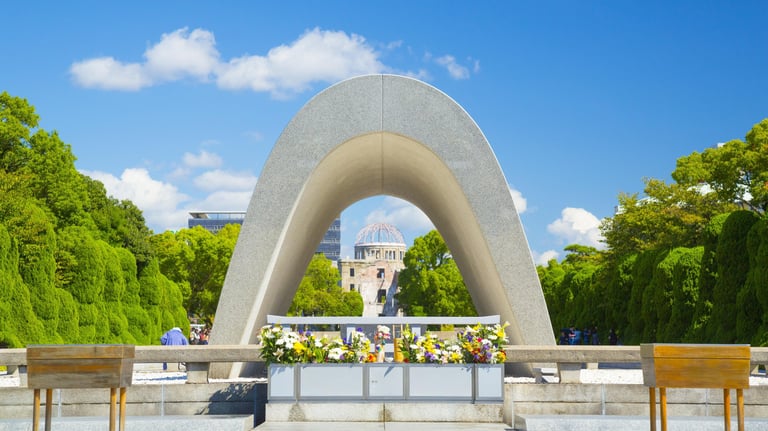

Victims Memorial Monument
The Cenotaph for the Atomic Bomb Victims is a monument located in the center of Hiroshima Peace Memorial Park and is an important place to commemorate the victims of the atomic bomb and symbolize our pledge for peace. Erected in 1952, the cenotaph conveys a message of abolition of nuclear weapons and lasting peace. It is known as a place that touches the hearts of many people with its simple but powerful design and profound inscription.
Bell of Peace
The Peace Bell is a symbolic monument located in Hiroshima Peace Memorial Park, and anyone is free to ring it. The bell was created in the hope of “abolishing nuclear weapons and achieving lasting peace,” and many people share the desire for peace through its sound. The bell, with its simple yet profound meaning, is a familiar place that offers peace of mind and hope to visitors.
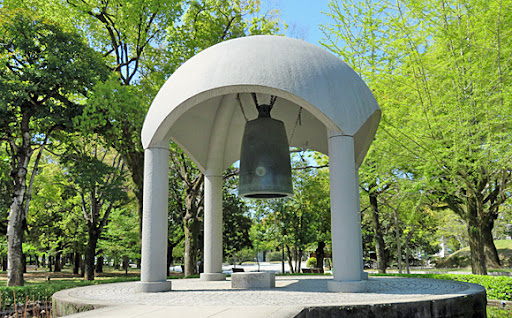

The Children's Peace Statue is a monument erected in Hiroshima Peace Memorial Park, built in memory of Sadako Sasaki, a young girl who died after the atomic bombing. The statue is loved by many people as a symbol of the desire for the abolition of nuclear weapons and permanent peace. It is also known as a place where children in particular can think about the importance of peace.
Children's Peace Statue
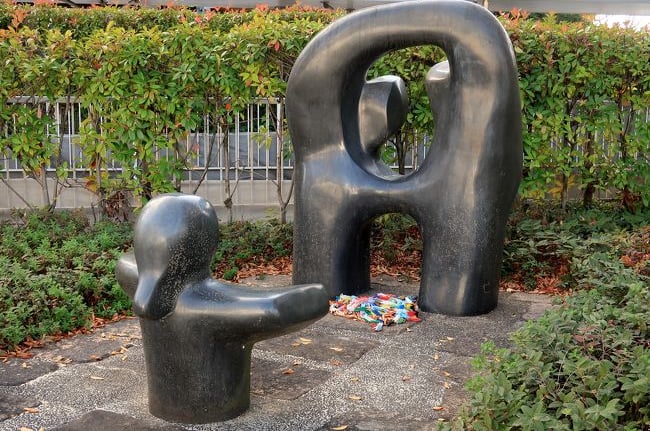

Mount Misen
Mount Misen is the highest peak on Miyajima (Itsukushima) in Hatsukaichi City, Hiroshima Prefecture, and is a mountain with an altitude of 535 meters. As part of the Setonaikai National Park, it is surrounded by natural scenery and is popular with tourists who visit using the ropeway and hiking trails. It has been revered as a sacred mountain since ancient times, and historical buildings and virgin forests remain near the summit. You can easily visit it by taking the ropeway.
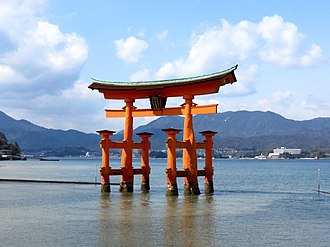

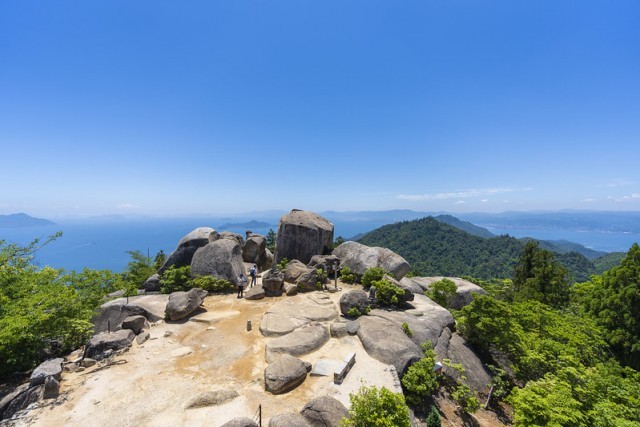

Itsukushima Shrine is one of Japan's most famous shrines, located on Miyajima in Hatsukaichi City, Hiroshima Prefecture. It is said to have been founded in 593 and is an ancient shrine with over 1,400 years of history. It was registered as a UNESCO World Heritage Site in 1996. It is characterized by its large torii gate that appears to float on the sea and its beautiful shrine building, and is known as one of the "Three Most Scenic Spots of Japan." It has been an object of worship since ancient times, and the mysterious scenery where nature and architecture blend in harmony attracts many people.
Itsukushima Shrine
Mount Senkoji Ropeway
Senkoji Ropeway is a sightseeing facility located in Onomichi City, Hiroshima Prefecture, and provides access to the top of Senkoji Mountain. The ropeway provides an easy way to visit a spectacular spot with a panoramic view of the beautiful scenery of the Seto Inland Sea and the city of Onomichi. The summit of the mountain is also home to the historic Senkoji Temple and an observatory, making it a popular area for tourists.
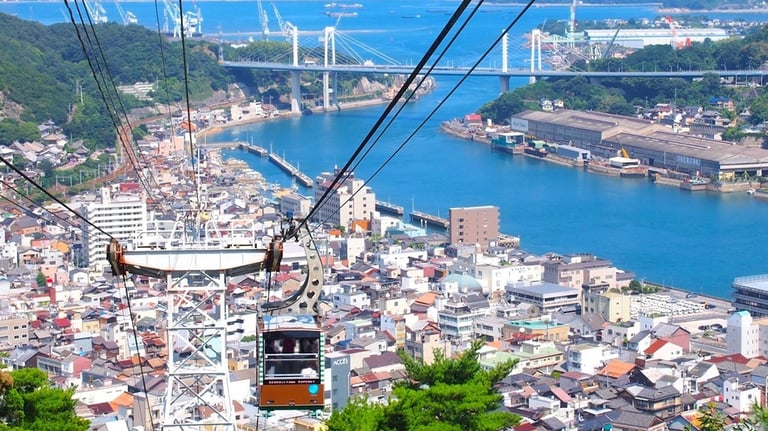

Takehara
Located in the southwestern part of Hiroshima Prefecture, Takehara is a town where history and nature are in harmony, and is also called "Little Kyoto in Aki. During the Edo period (1603-1868), Takehara flourished as a “salt town,” and its old townscape and traditional culture, which retain traces of those days, are popular among tourists. The area is also included in the Seto Inland Sea National Park, with beautiful seascapes and mountains. It is also a place where tourists can enjoy the beautiful nature and special products of the Seto Inland Sea, making it a place where they can spend a fulfilling time.
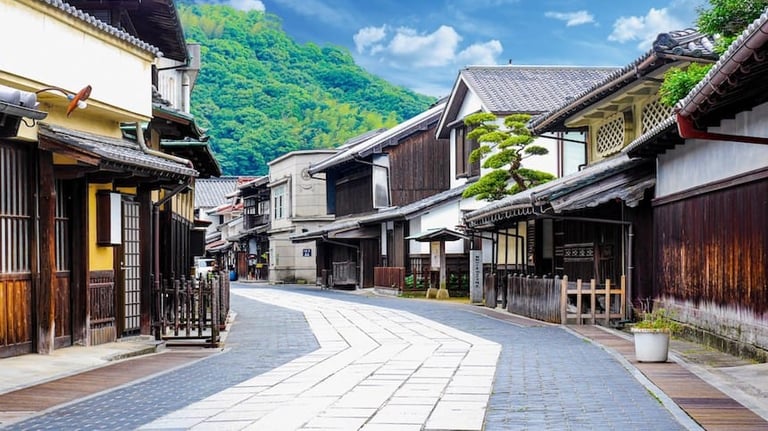

Hiroshima Castle
Hiroshima Castle, also known as “Rijo,” was built in 1589 by Terumoto Mori, a feudal warlord. During the Edo period (1603-1868), the castle was used as the seat of the Hiroshima clan. The main citadel and castle tower were destroyed by the atomic bombing in 1945, but were rebuilt in reinforced concrete in 1958. Today, it is a popular spot for many tourists because of its beautiful appearance and historical value.
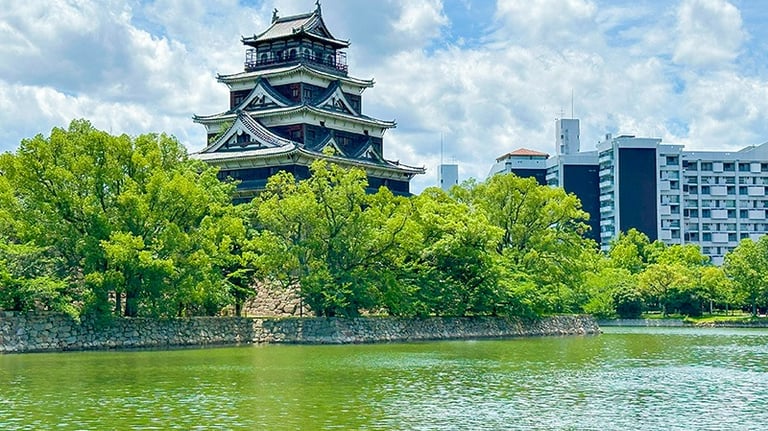

Self-Defense Force Museum
The Maritime Self-Defense Force Kure Archives , also known as the Yamato Museum, is a historical and educational museum located in Kure City, Hiroshima Prefecture. The museum attracts many tourists from Japan and abroad as a place where visitors can learn about Japan's proud shipbuilding technology and naval history. The museum is especially famous for its 1/10 scale model of the battleship Yamato, which was active during World War II. It is also a facility where visitors can learn deeply about the history and culture of Kure City, which flourished as a "military port city.
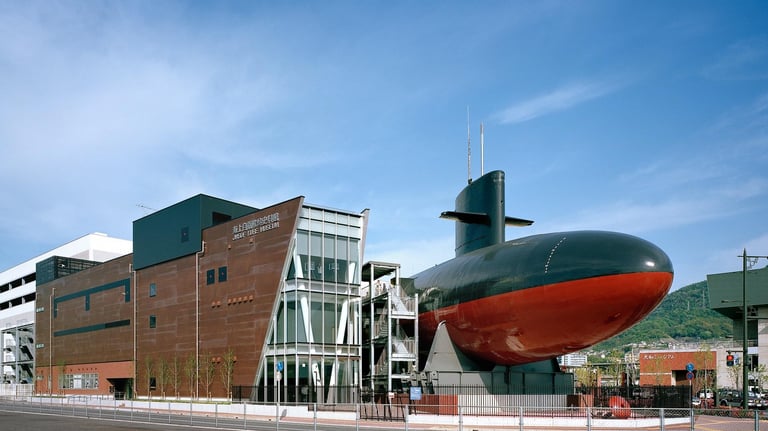

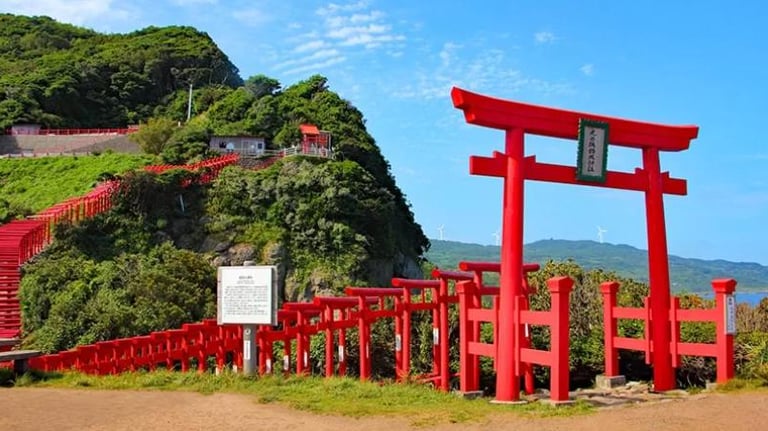

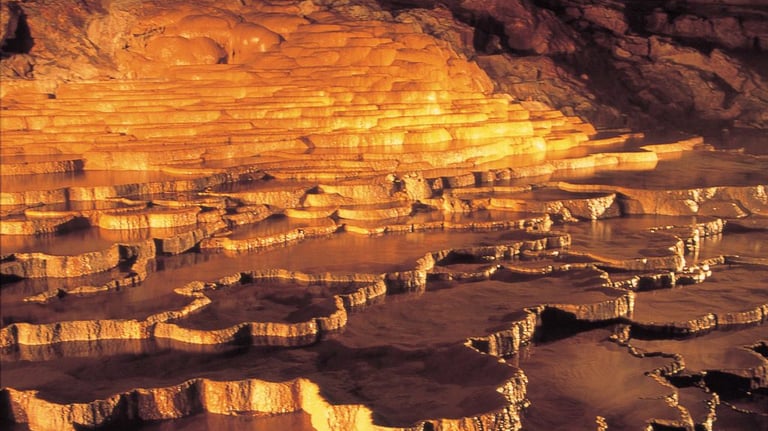

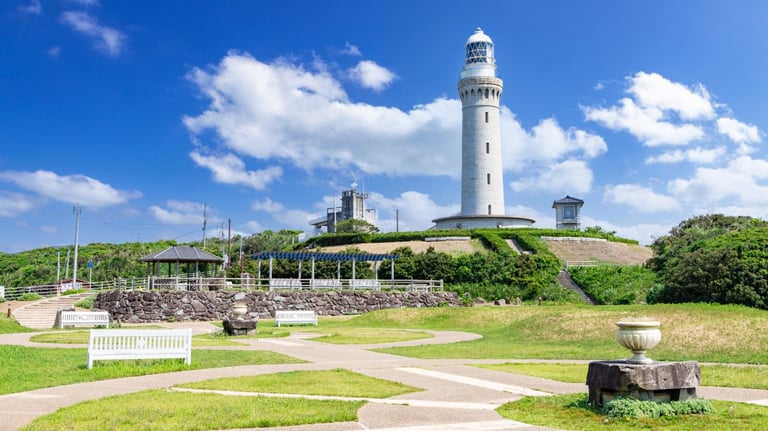

Yamaguchi Prefecture
Yamaguchi Prefecture is located in western Honshu, Japan, and is the westernmost prefecture in the Chugoku region (Chugoku Chiho). Located between the Seto Inland Sea and the Sea of Japan, Yamaguchi Prefecture is characterized by its rich natural environment and historical culture. Yamaguchi is dotted with many areas with their own unique charms, such as the “Kanmon Straits,” “Hagi,” and "Akiyoshido. Below is some useful information for tourists visiting Yamaguchi Prefecture.
Motonosumi Inari Shrine is a beautiful shrine located in Nagato City, Yamaguchi Prefecture, and its 123 vermilion-lacquered torii gates are attracting attention in Japan and abroad as a "spectacular view of Japan. The shrine is a place where one can feel the harmony between the faith of the local people and nature, and is highly regarded as a tourist attraction, with CNN (USA) selecting it as one of the “31 Most Beautiful Places in Japan” in 2015.
Motonosumi Inari Shrine
Akiyoshido Cave
Akiyoshido Cave is one of the most famous limestone caves in Japan and is designated as a special natural monument of Japan. The magnificent natural scenery and mysterious caves are so beautiful that they have been called "the best limestone caves in the East. It is visited by many tourists from Japan and abroad, and is known as the center of the “Akiyoshidai Geopark” together with the Akiyoshidai Karst Plateau.
Tsunoshima Lighthouse
Tsunoshima Lighthouse is a beautiful lighthouse located in Shimonoseki City, Yamaguchi Prefecture, and is the symbol of Tsunoshima Island, which floats in the Sea of Japan. This lighthouse has been selected as one of the 50 best lighthouses in Japan, and the contrast between its chalk white appearance and the blue sea is a spectacular sight that attracts many tourists. It is also a popular spot that appears as a filming location in movies, TV dramas, and commercials.
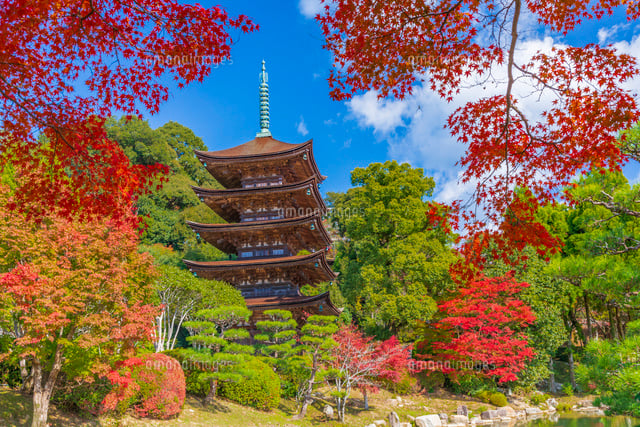

Rurikoji Temple
Ruriko Temple was founded in 1442 and is particularly famous for its beautiful five-story pagoda. The five-story pagoda, one of the “Three Famous Pagodas of Japan” and designated as a National Important Cultural Property, was built in 1473 and has a history of over 550 years. Surrounded by tranquil gardens and lush greenery, the pagoda is a popular place for visitors to relax and feel the depth of its history.
Tsunoshima Bridge
Tsunoshima Bridge is a beautiful bridge with a total length of approximately 1,780 meters that connects Nagato City, Yamaguchi Prefecture, and Tsunoshima Island, which is located in the Sea of Japan. It is one of the longest bridges over remote islands in Japan that can be crossed for free. The contrast between the blue sea and the white bridge is a spectacular sight that is popular among tourists. It has also been selected as one of the "100 Best Roads in Japan," making it a symbolic presence that combines scenic beauty with functionality.
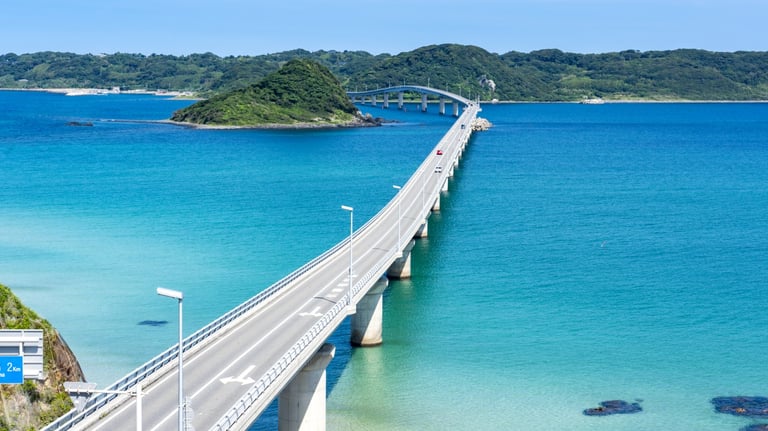

Kintai Bridge is a wooden arch bridge that represents Japan and is located in Iwakuni City, Yamaguchi Prefecture. It is popular among both domestic and international tourists for its graceful design and historical value. This bridge, which features five arches, is counted as one of the "Three Great Bridges of Japan" and is designated as an Important Cultural Property of Japan. In addition, the bridge is dotted with beautiful nature and historical buildings, providing healing and inspiration to all who visit.
Kintai Bridge
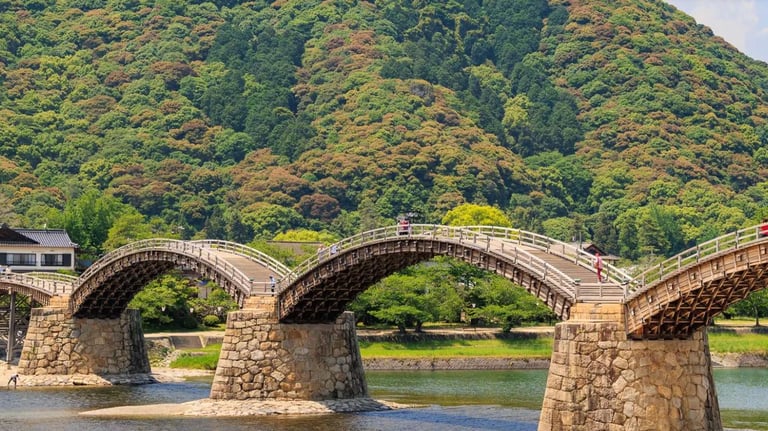

Iwakuni Castle
Iwakuni Castle is a historic castle in Iwakuni, Yamaguchi Prefecture, known for its beautiful castle tower and the surrounding natural scenery. It was built by Yoshikawa Hiroie in 1608, but was later demolished in accordance with the shogunate's "One Castle per Province" order. The current castle tower was rebuilt in 1962 and is designated as an Important Cultural Property of Japan.
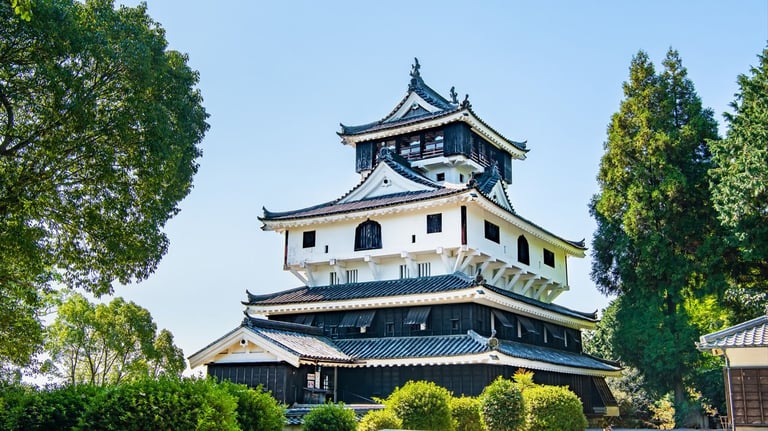

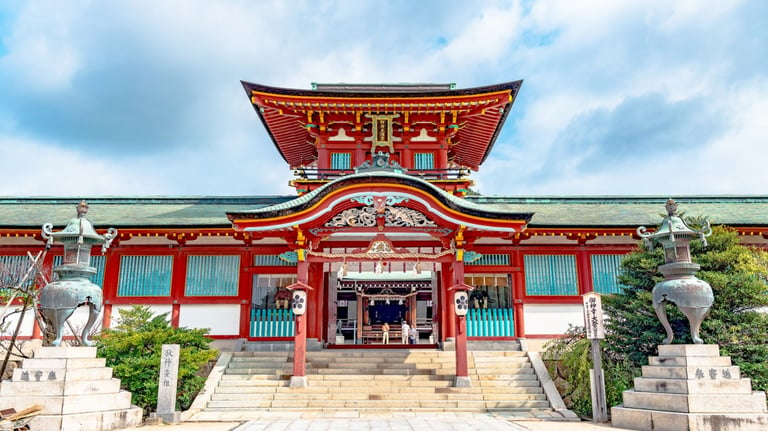

Hofu Tenmangu Shrine was founded in 904 and is known as the oldest Tenmangu Shrine in Japan. It is considered the head shrine of the approximately 12,000 Tenmangu shrines in Japan. The shrine is dedicated to Sugawara no Michizane, the god of learning, and is visited by many people who pray for students preparing for entrance exams and academic success. It is also a popular tourist destination because of its beautiful garden and seasonal natural scenery.
Hofu Tenmangu Shrine
White-walled streets
The White Wall Street is a historical scenic area in Yanai City, Yamaguchi Prefecture, where old merchant houses and storehouses from the Edo to Meiji periods remain. Characterized by white plastered walls and lattice windows, the beautiful streetscape has attracted tourists and has been selected as one of the "100 Best Roads in Japan." It is also a great spot for a stroll, as you can enjoy the local traditional culture and cuisine.
